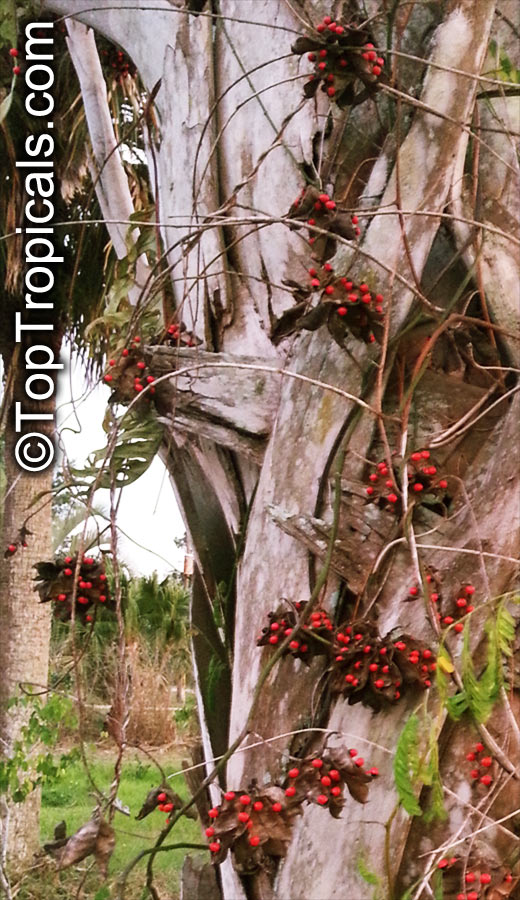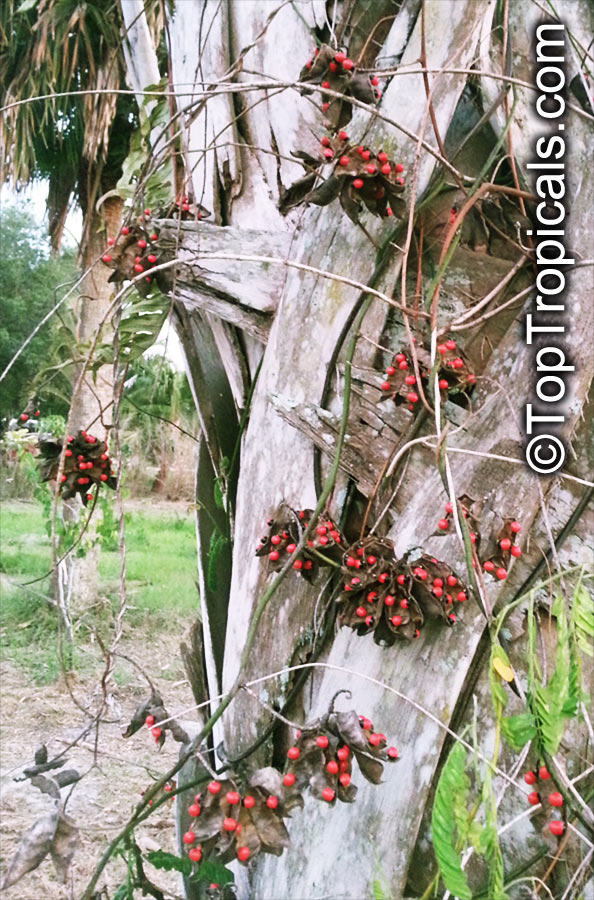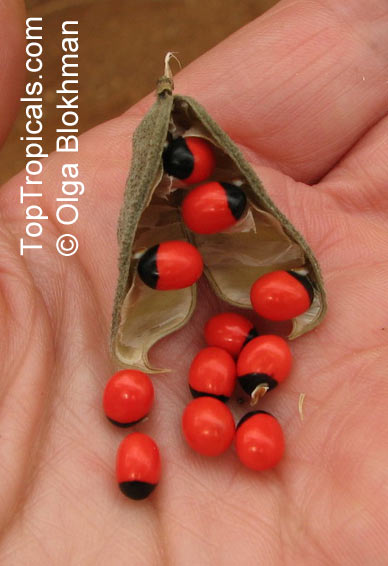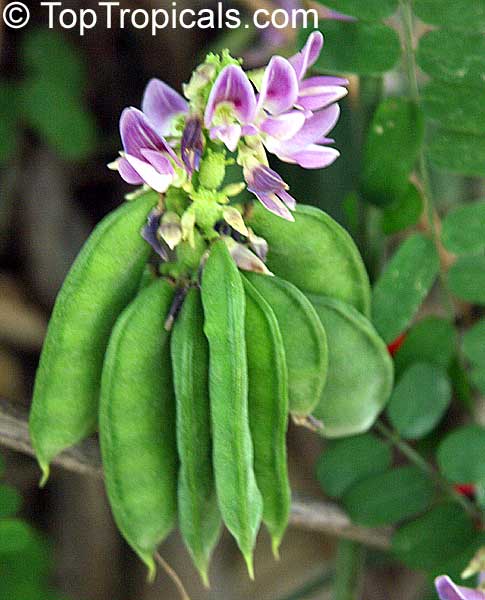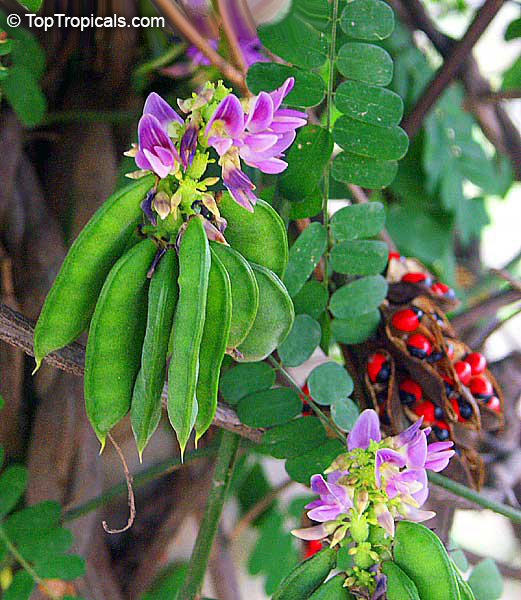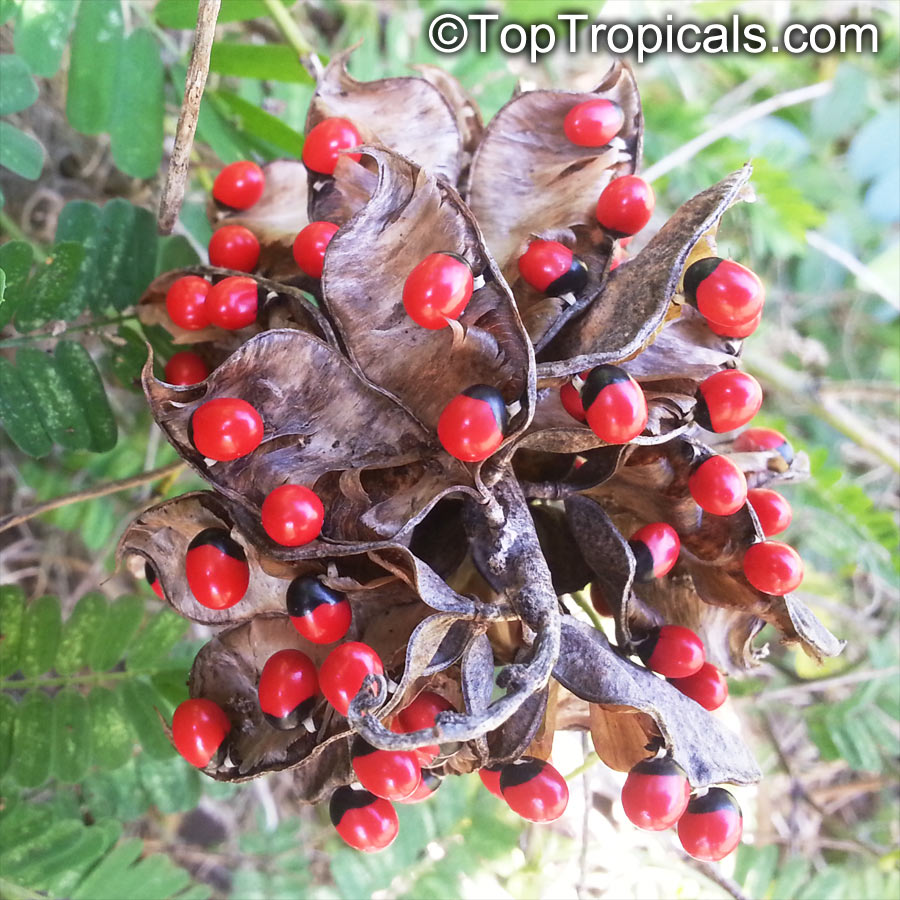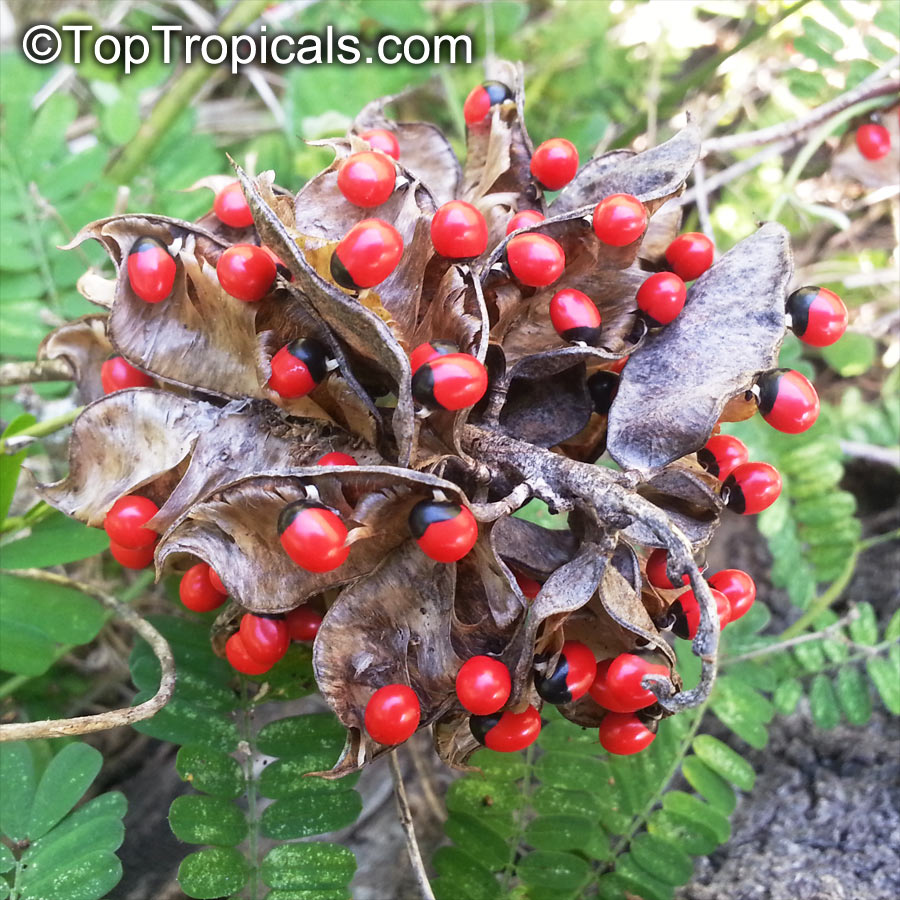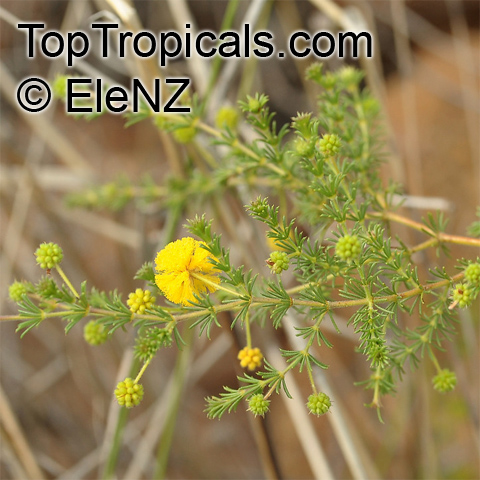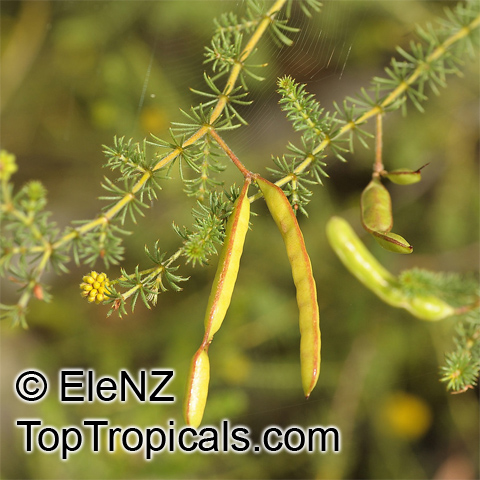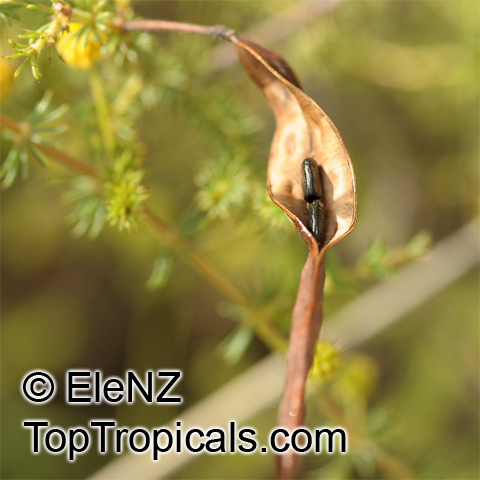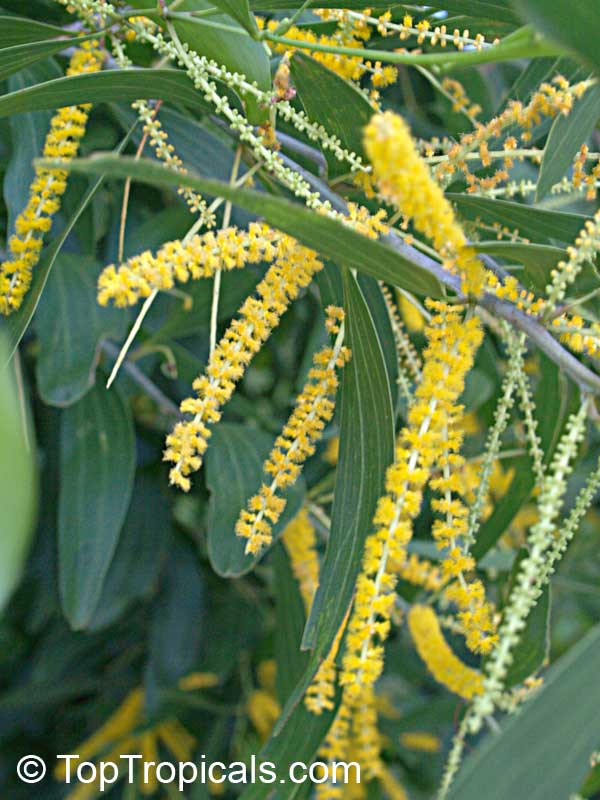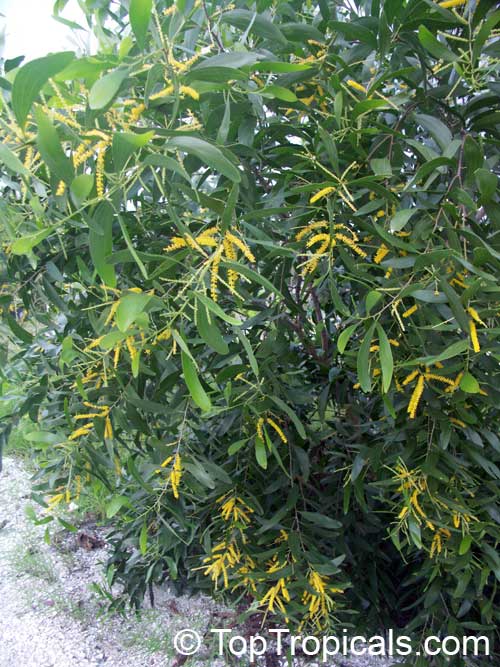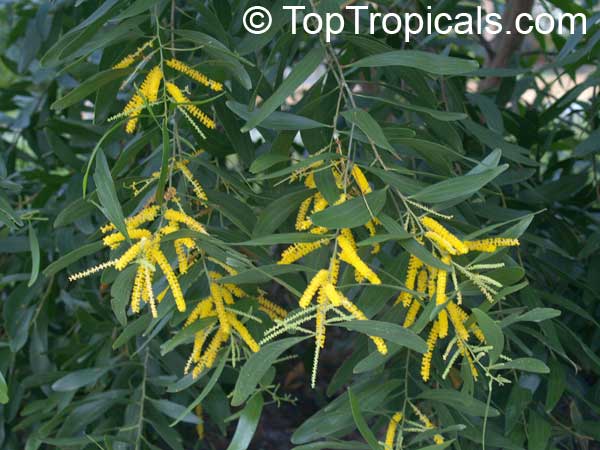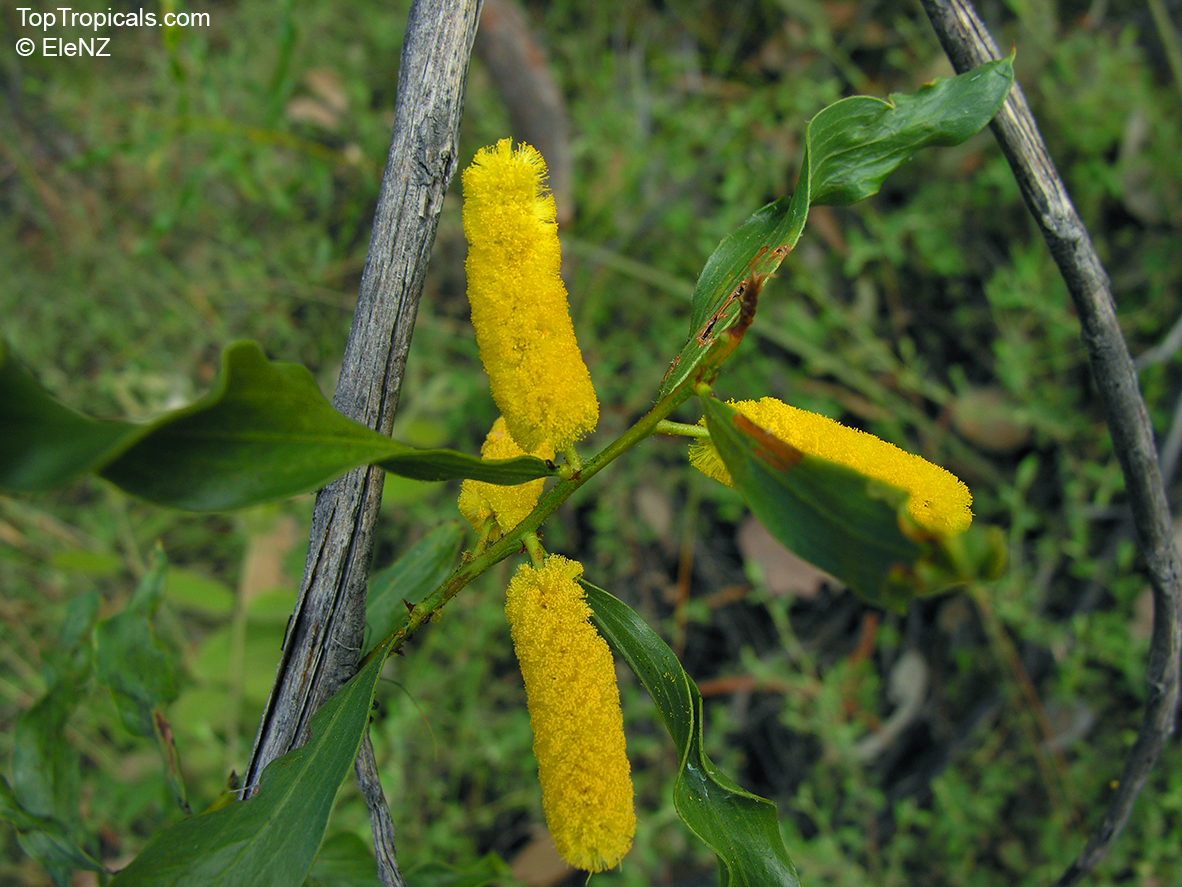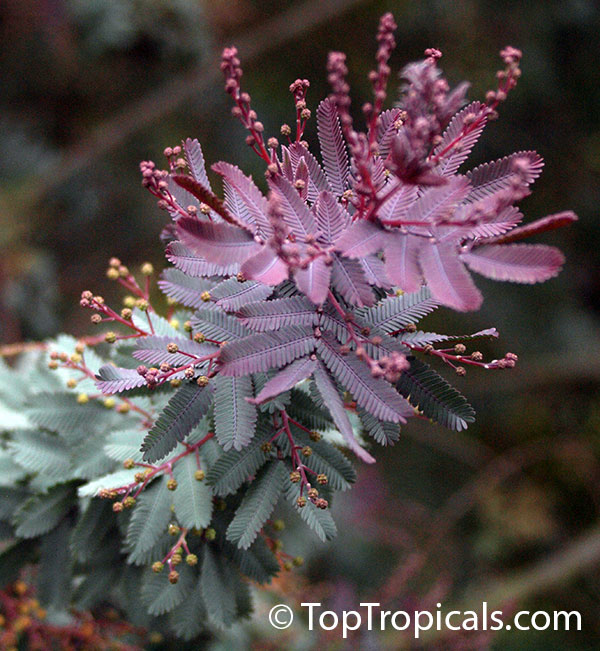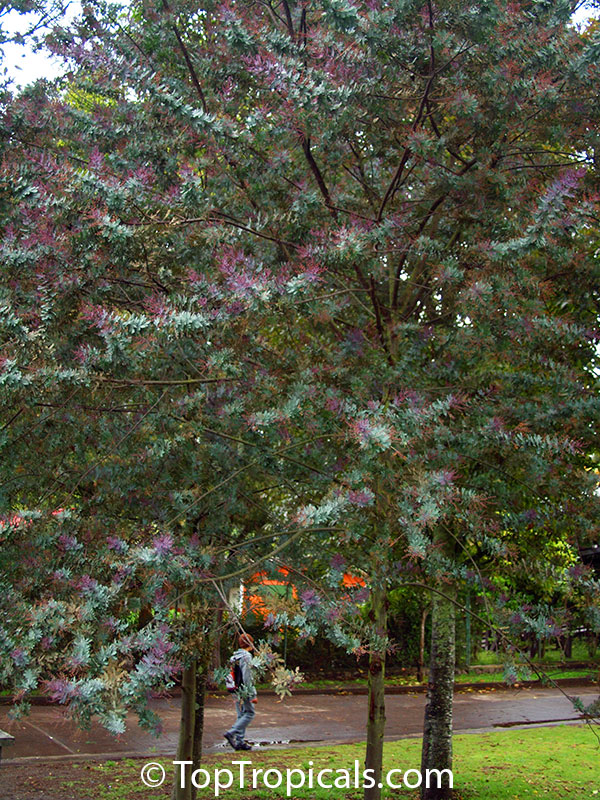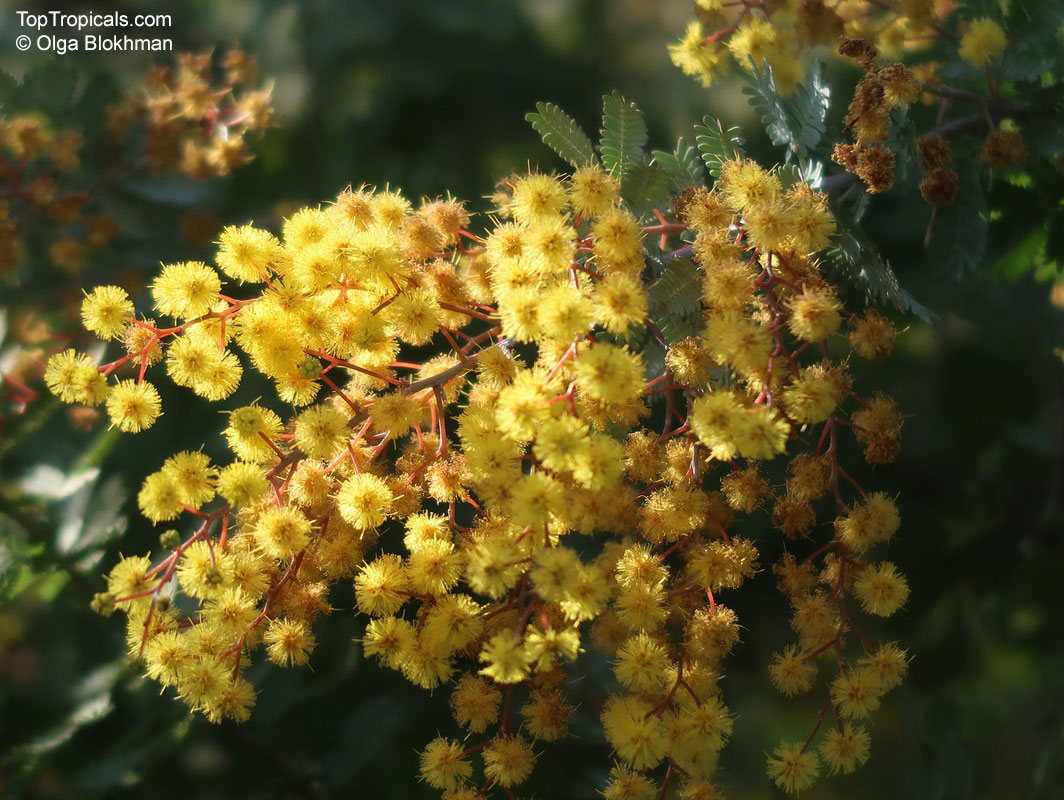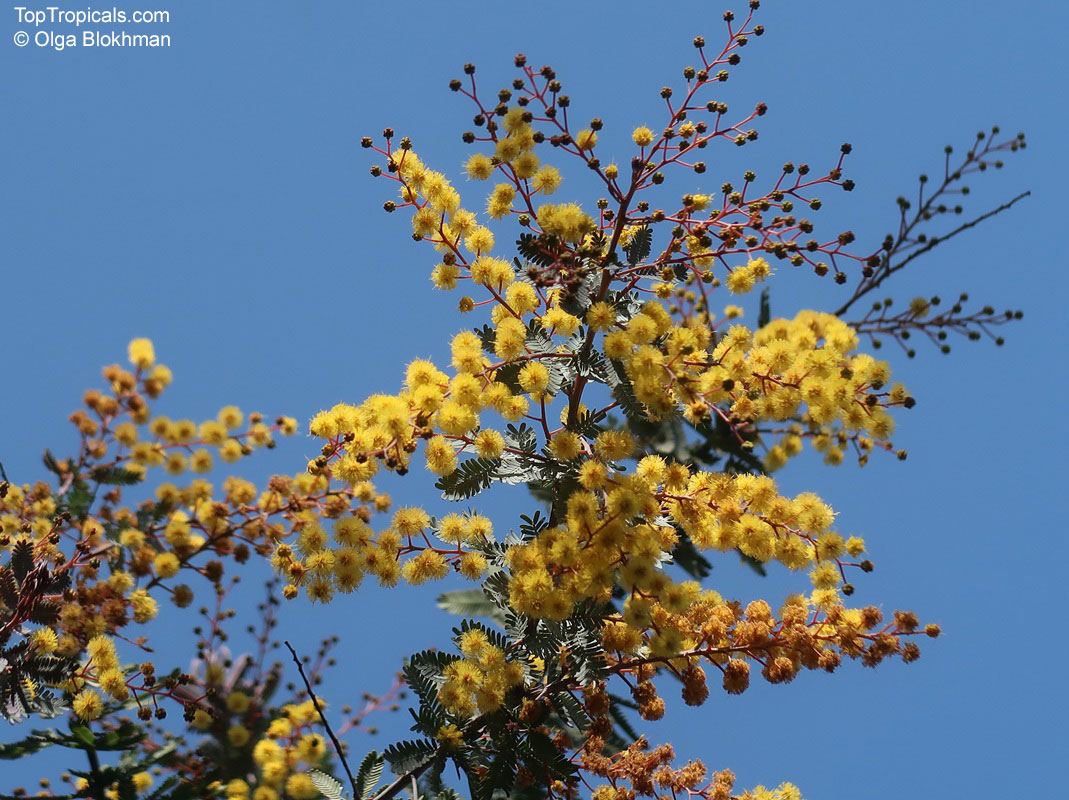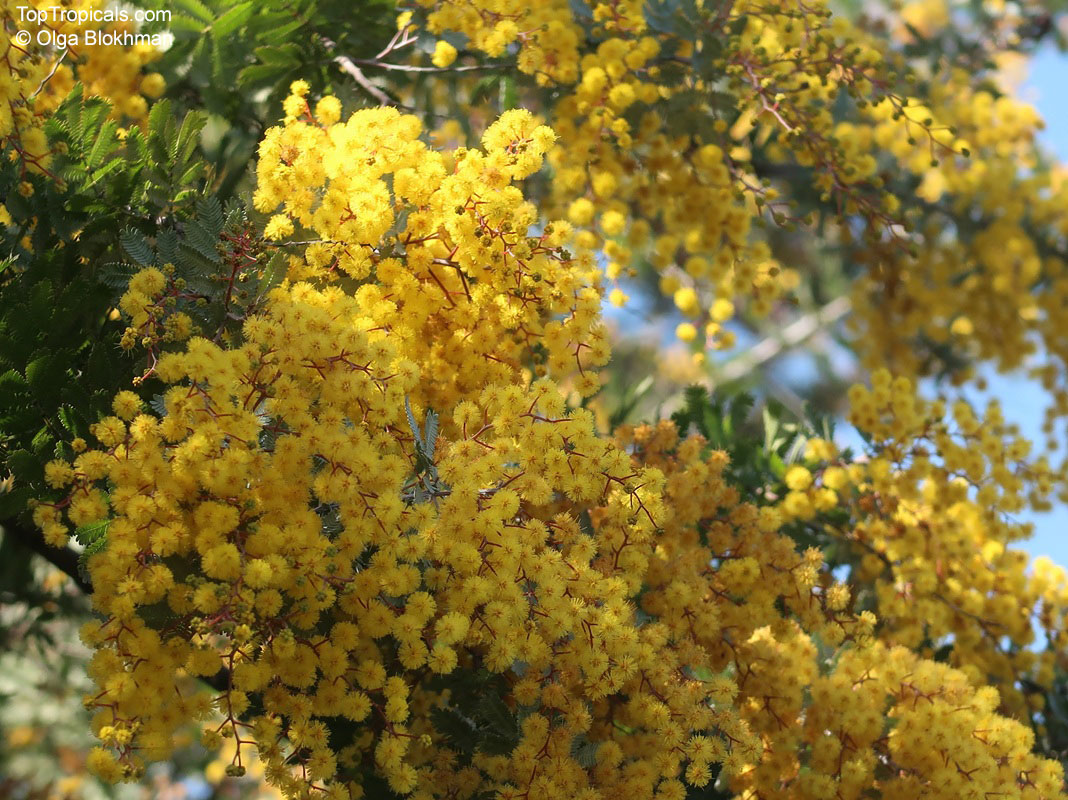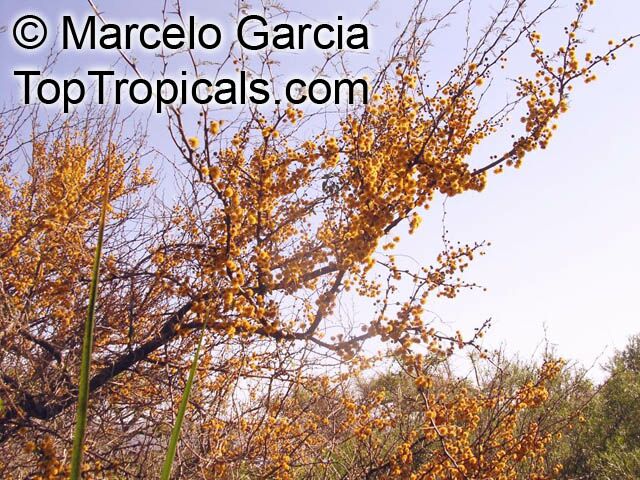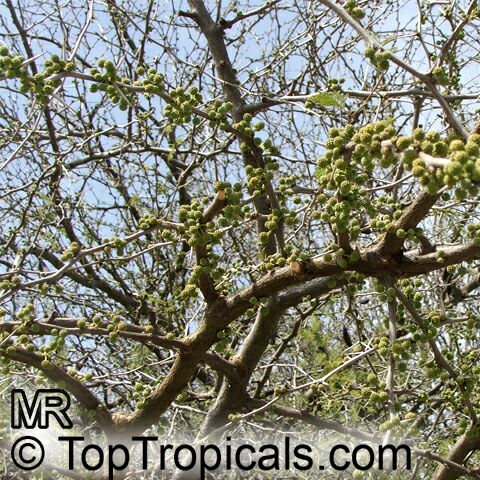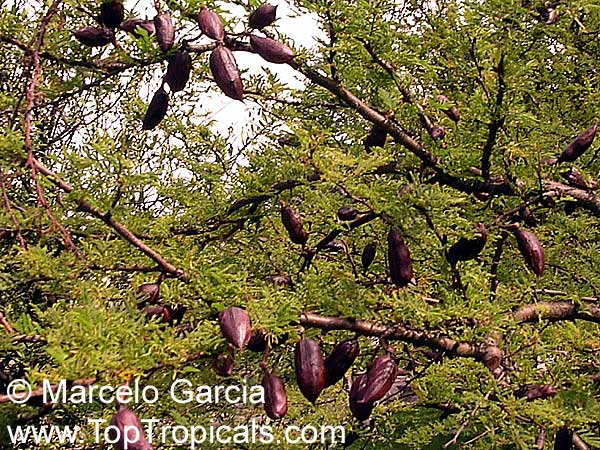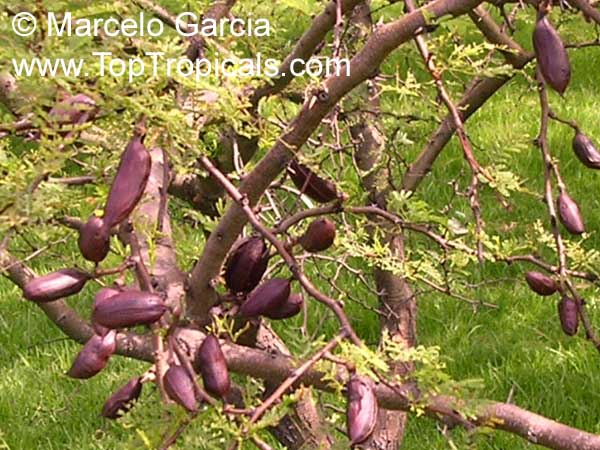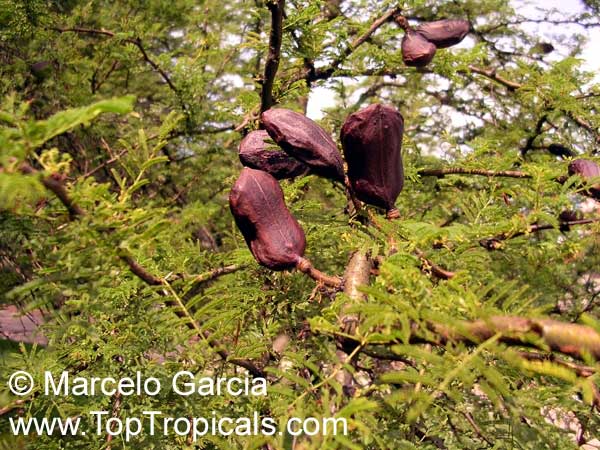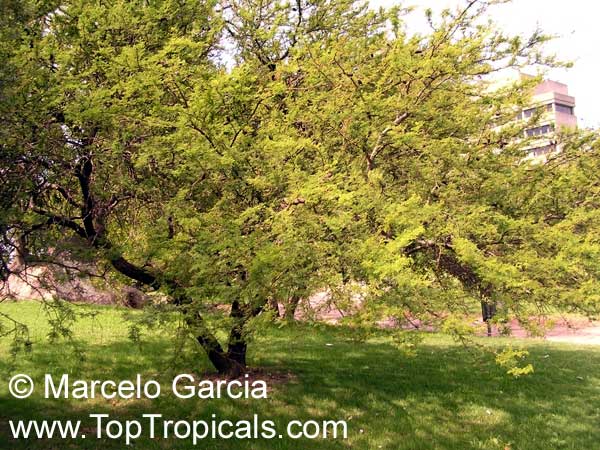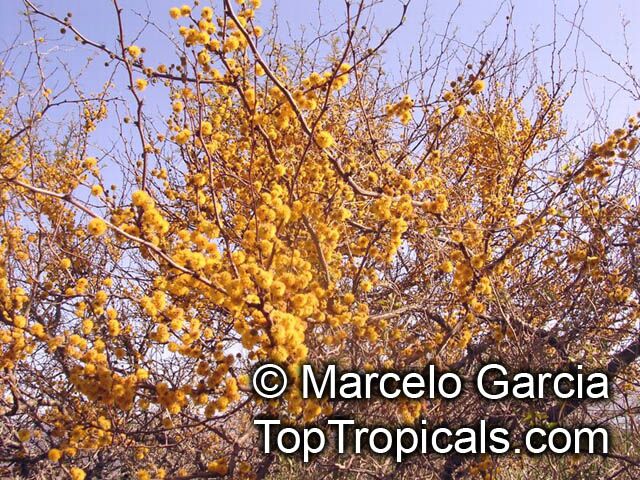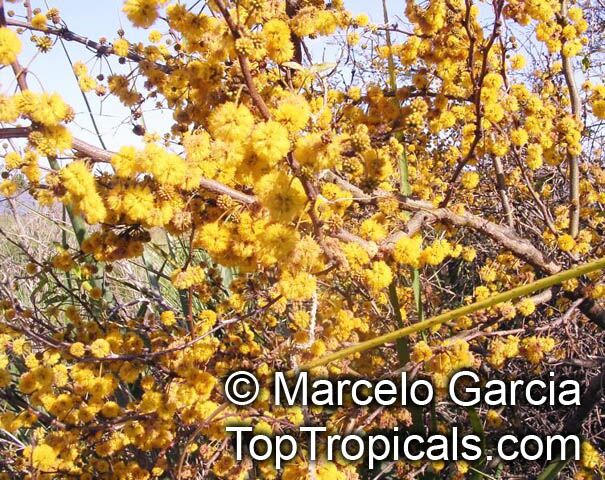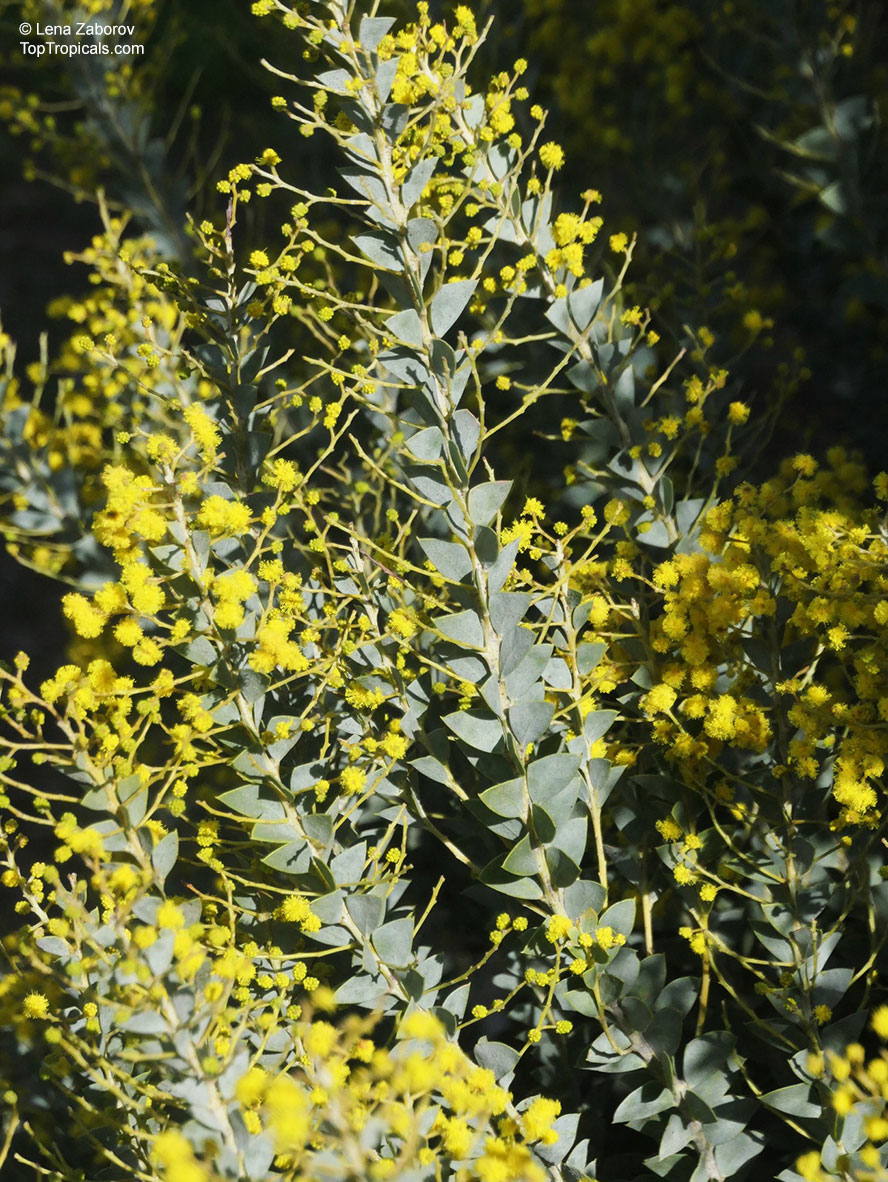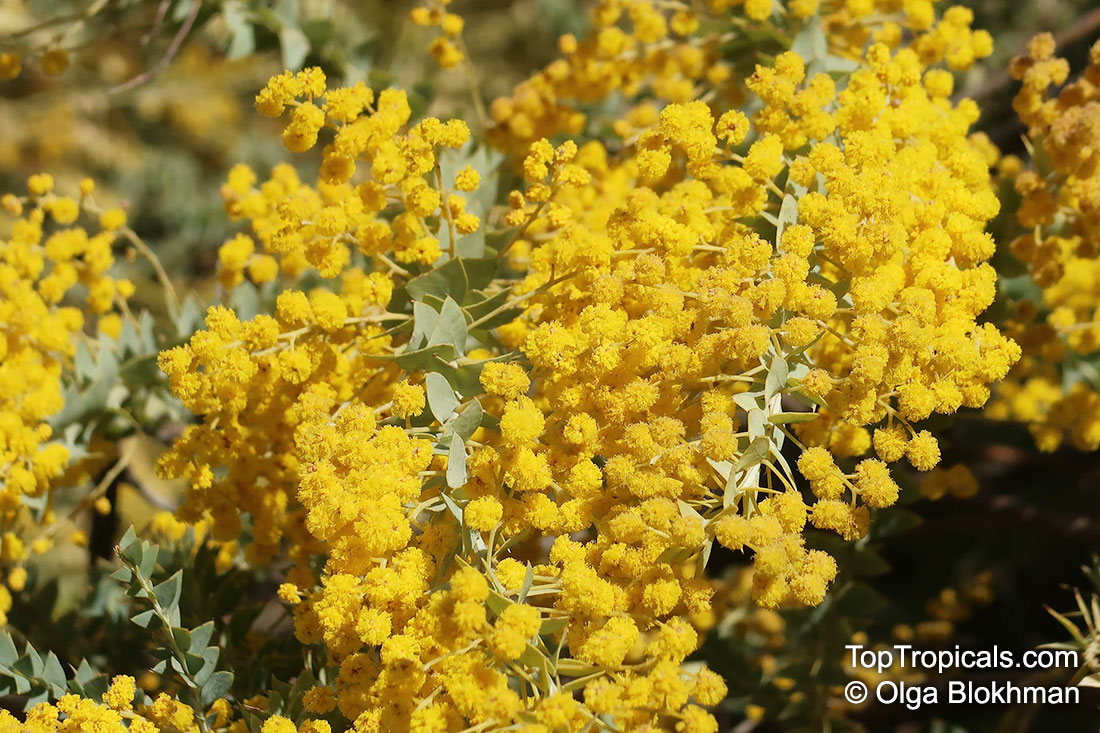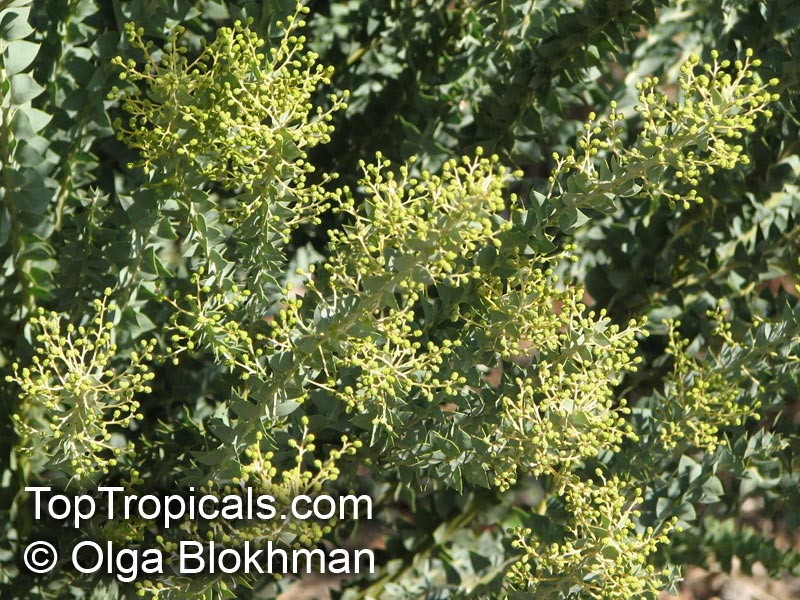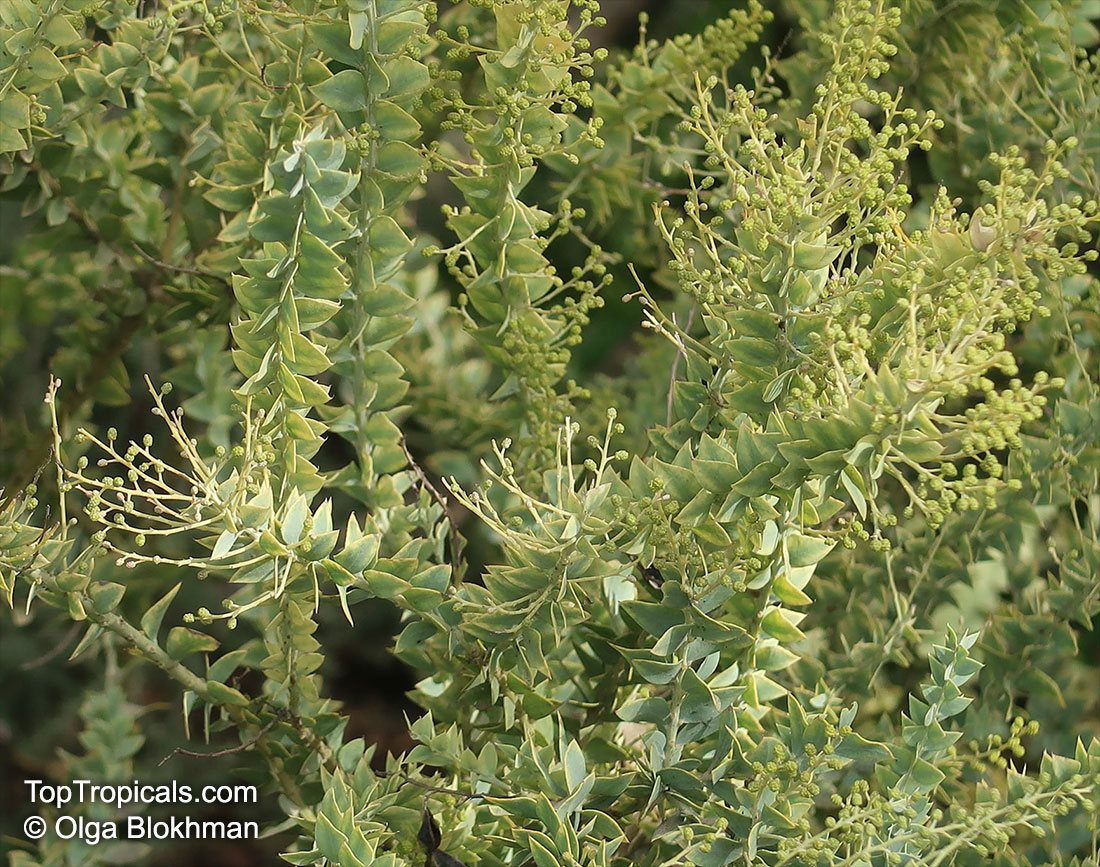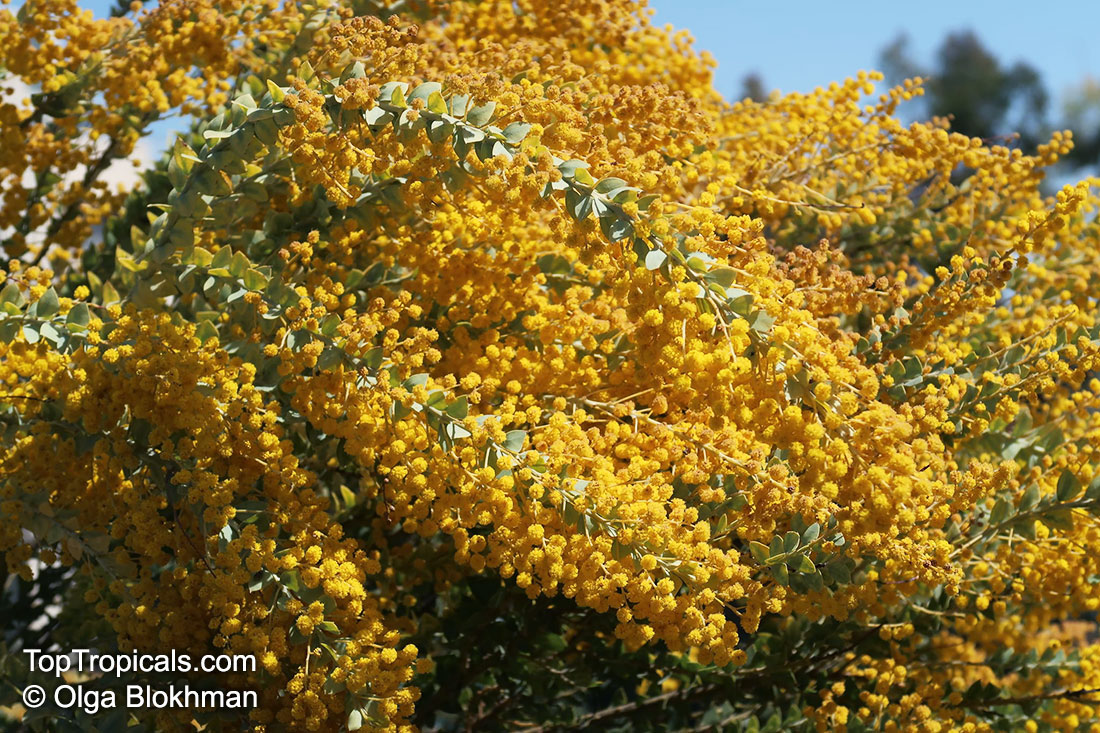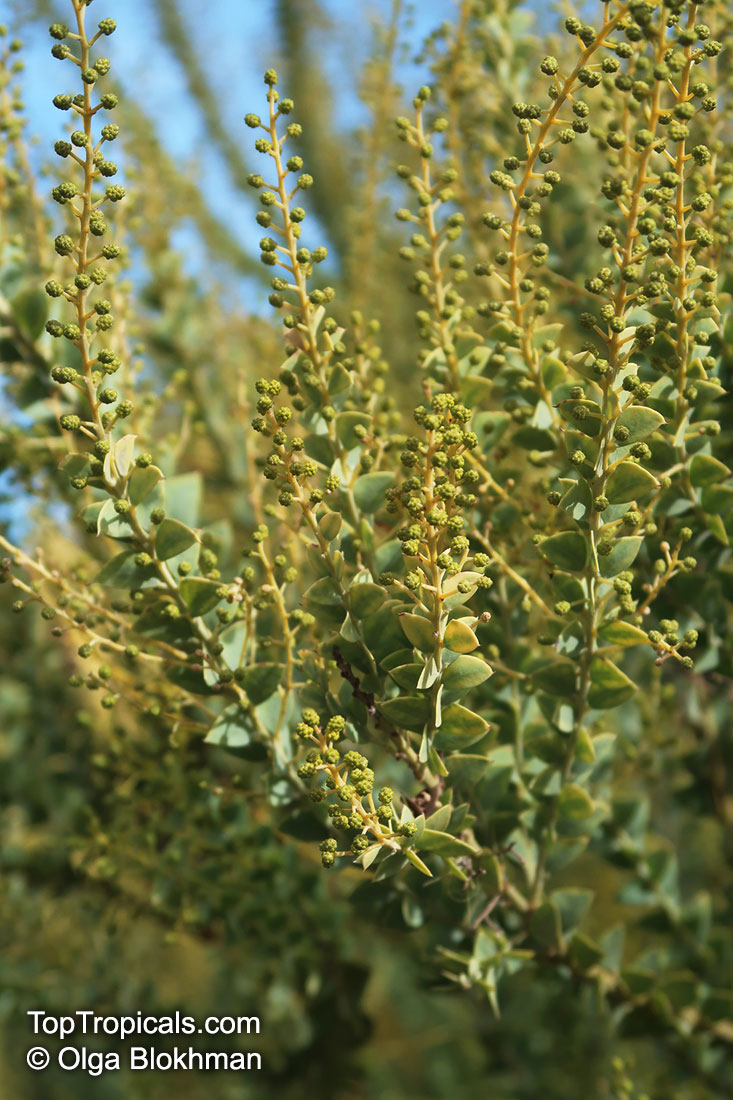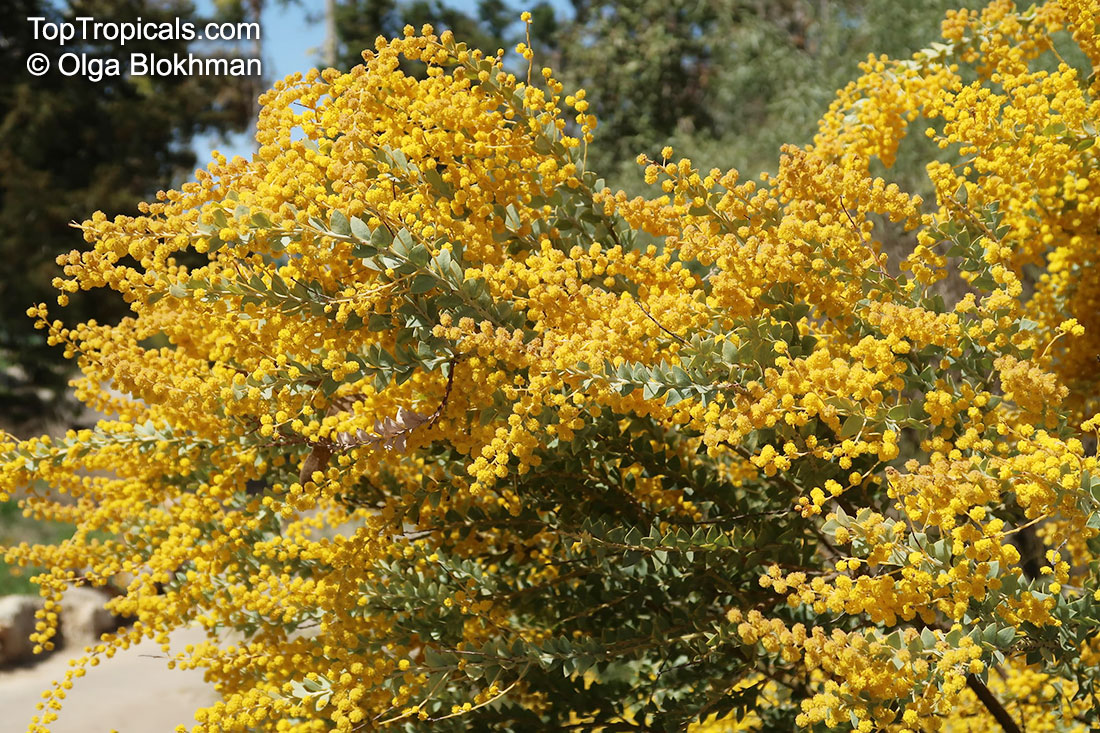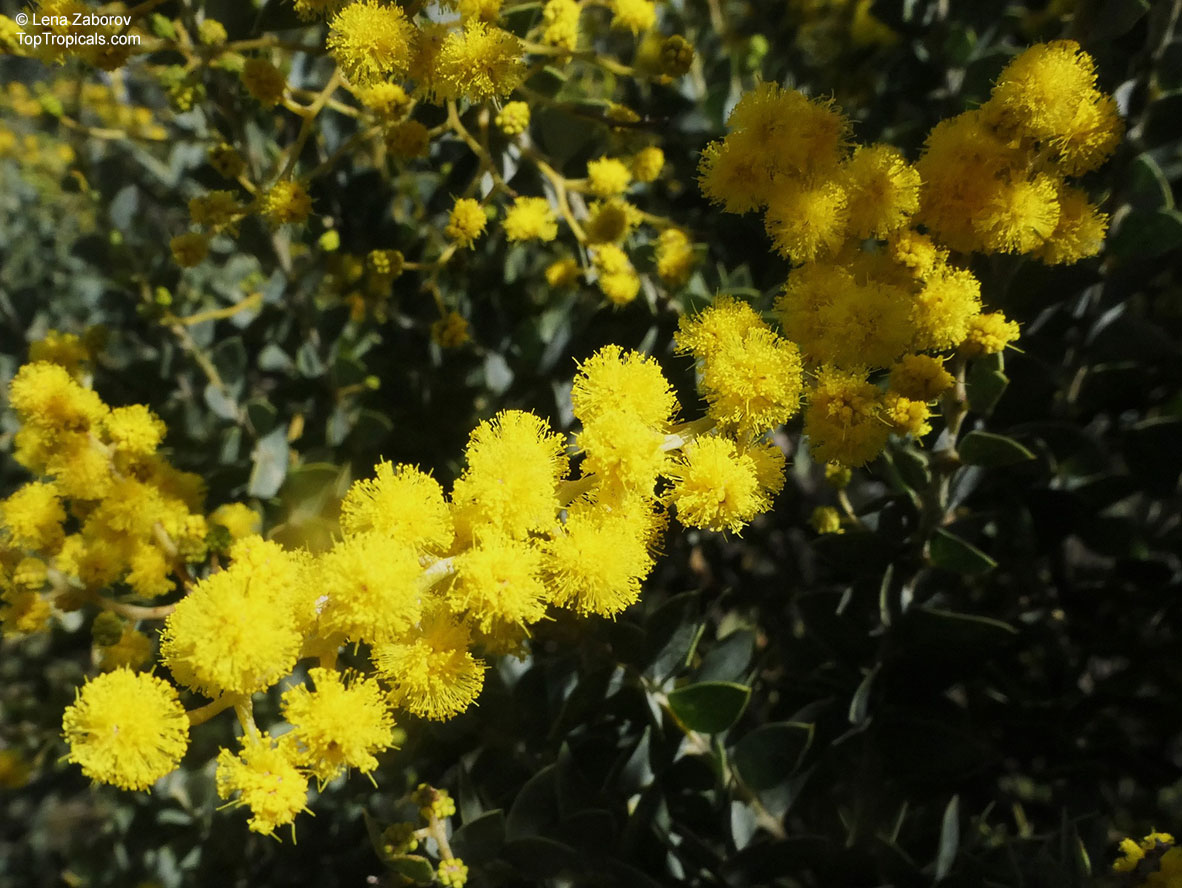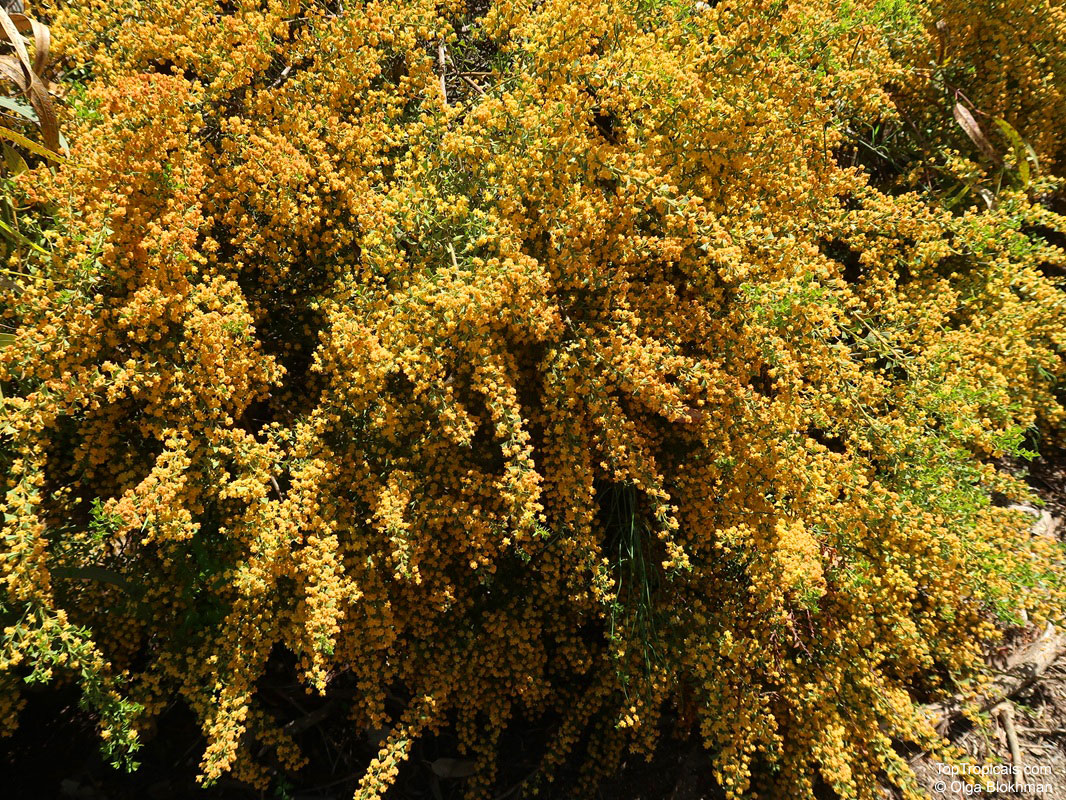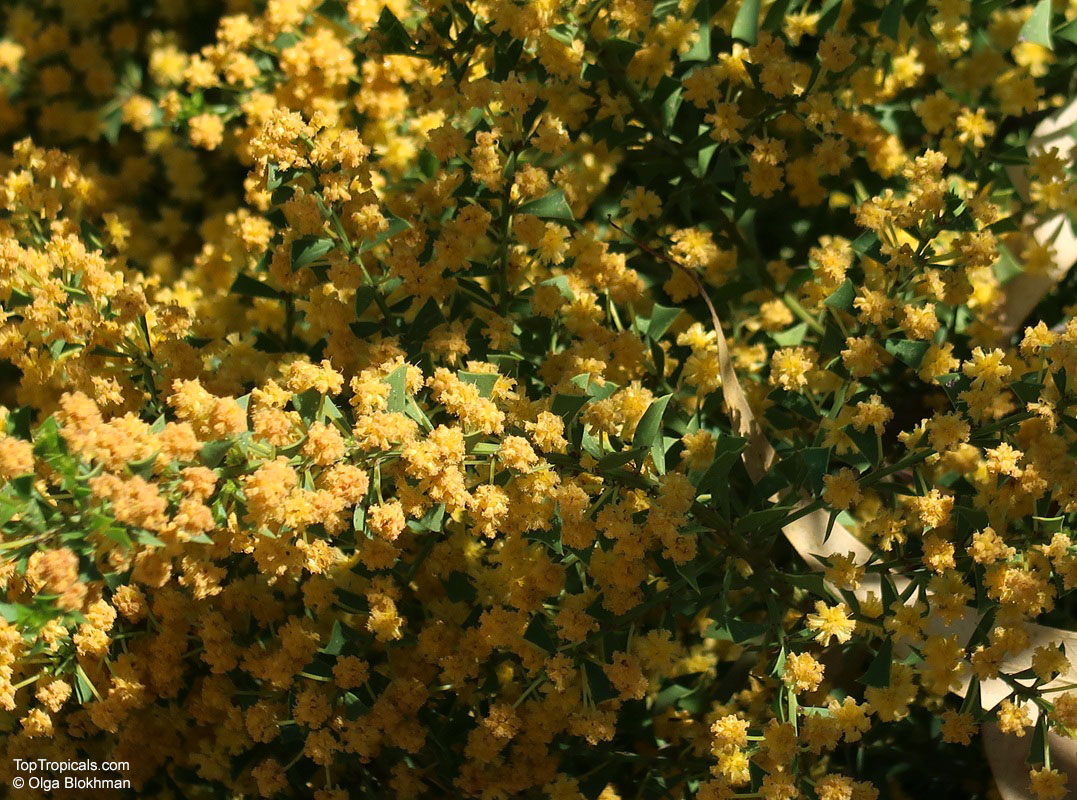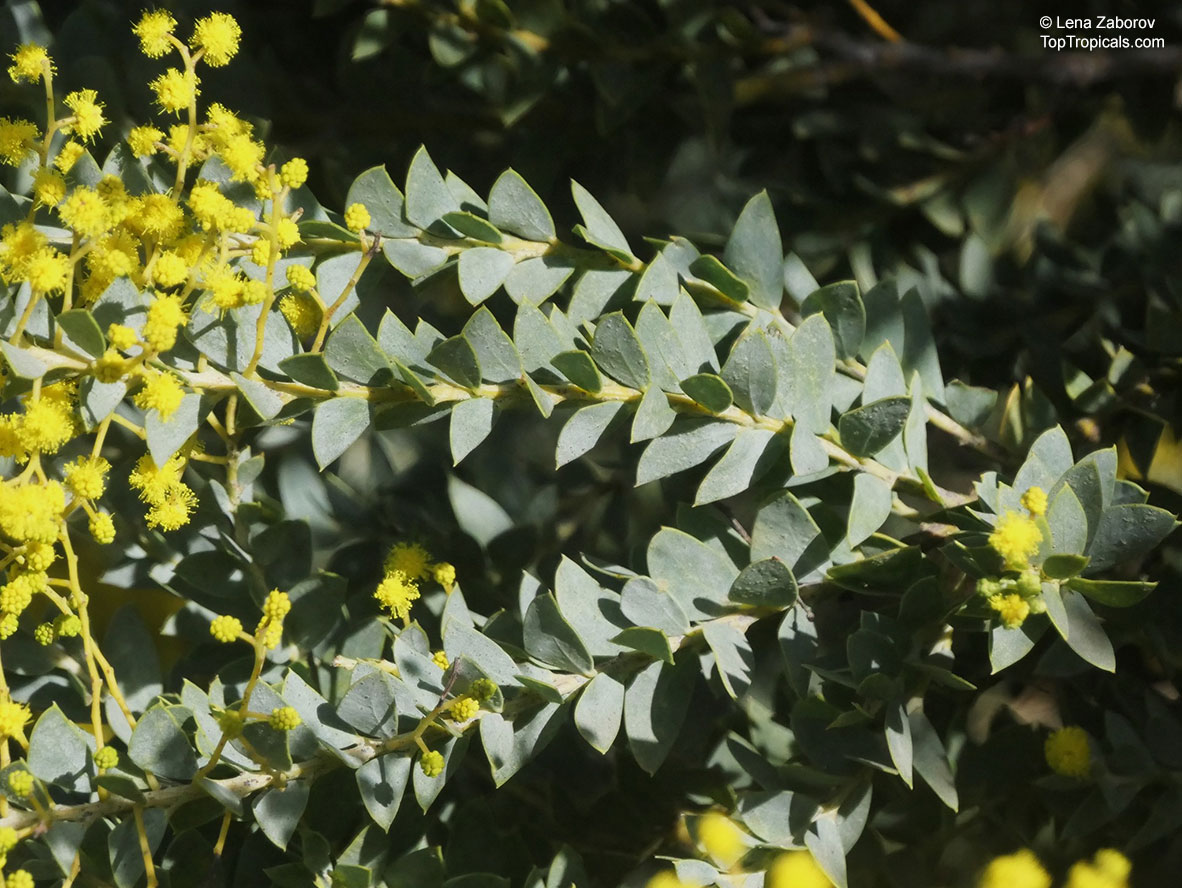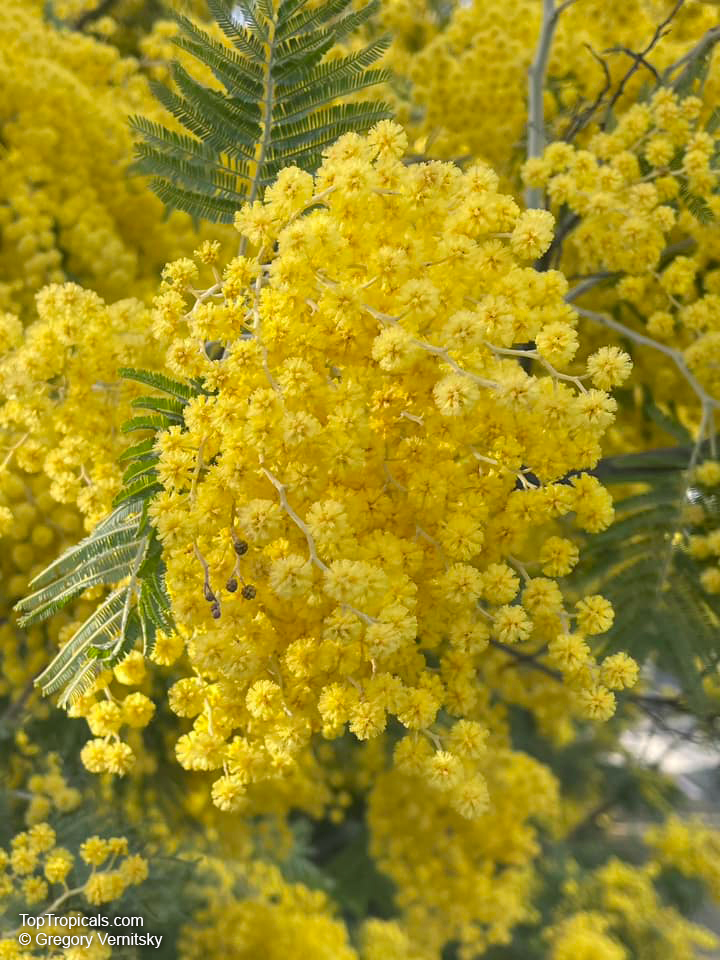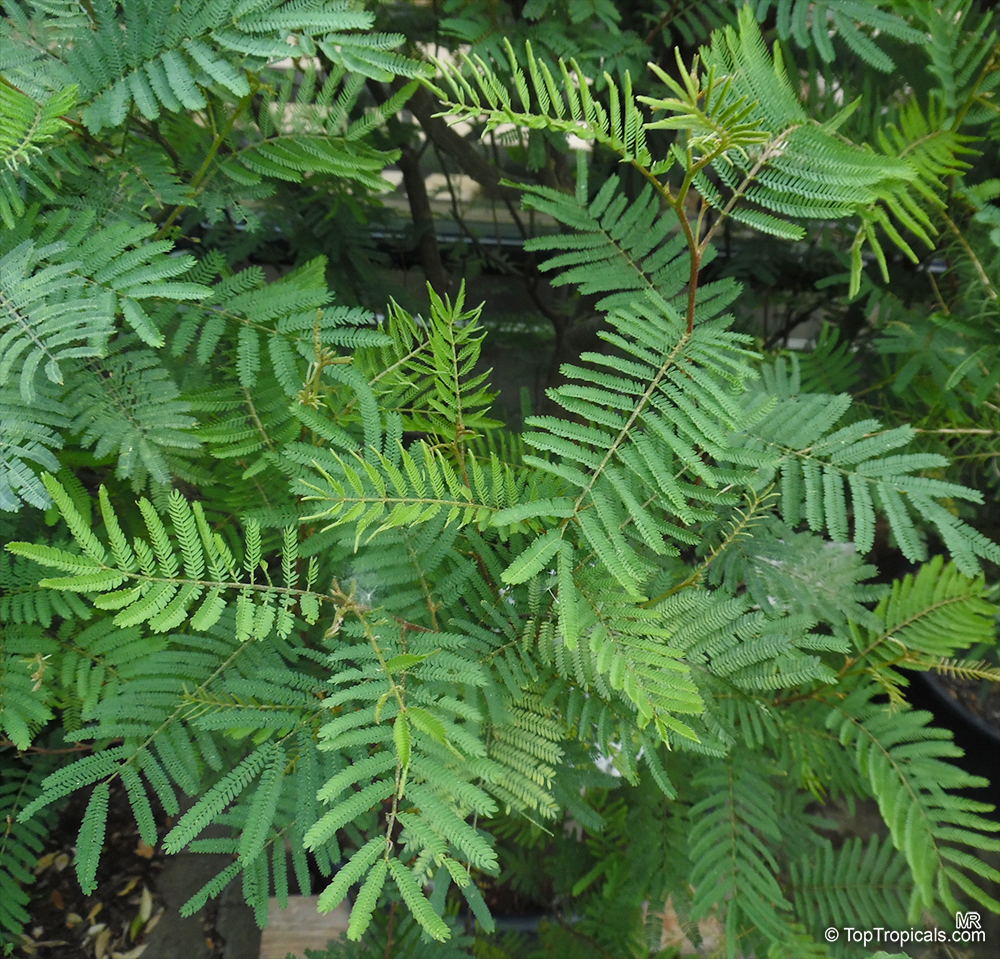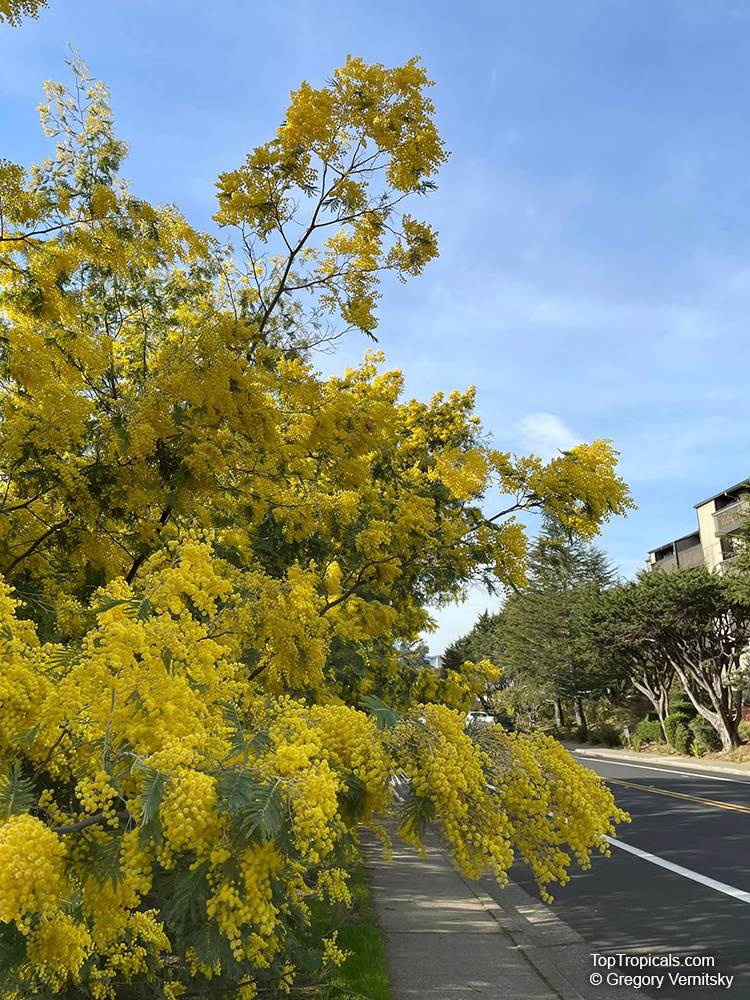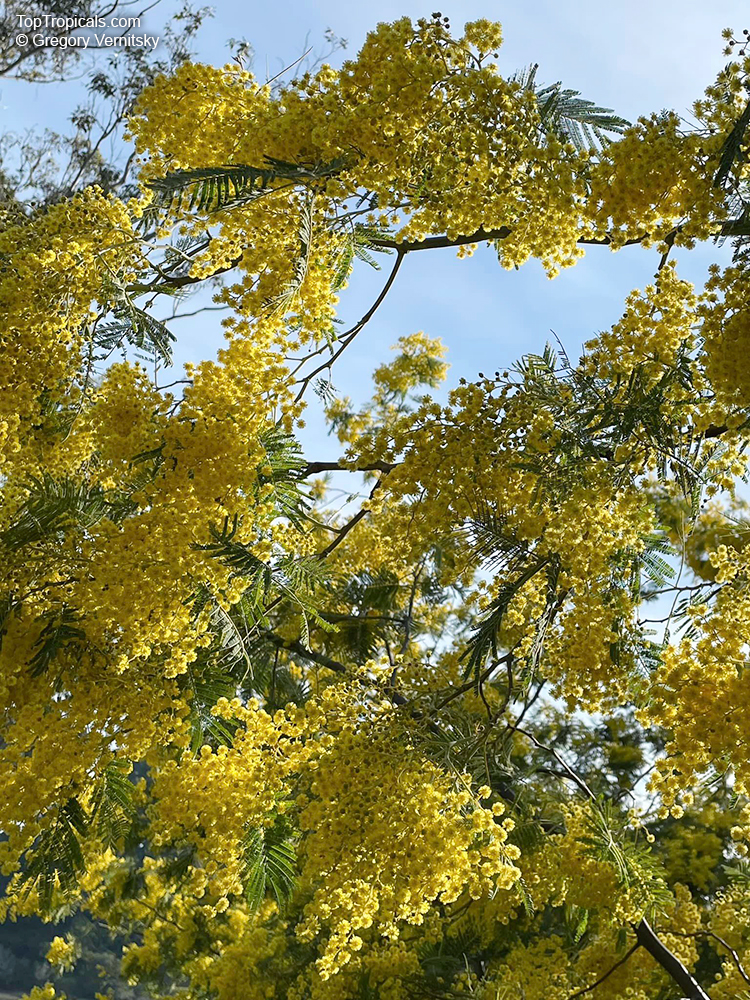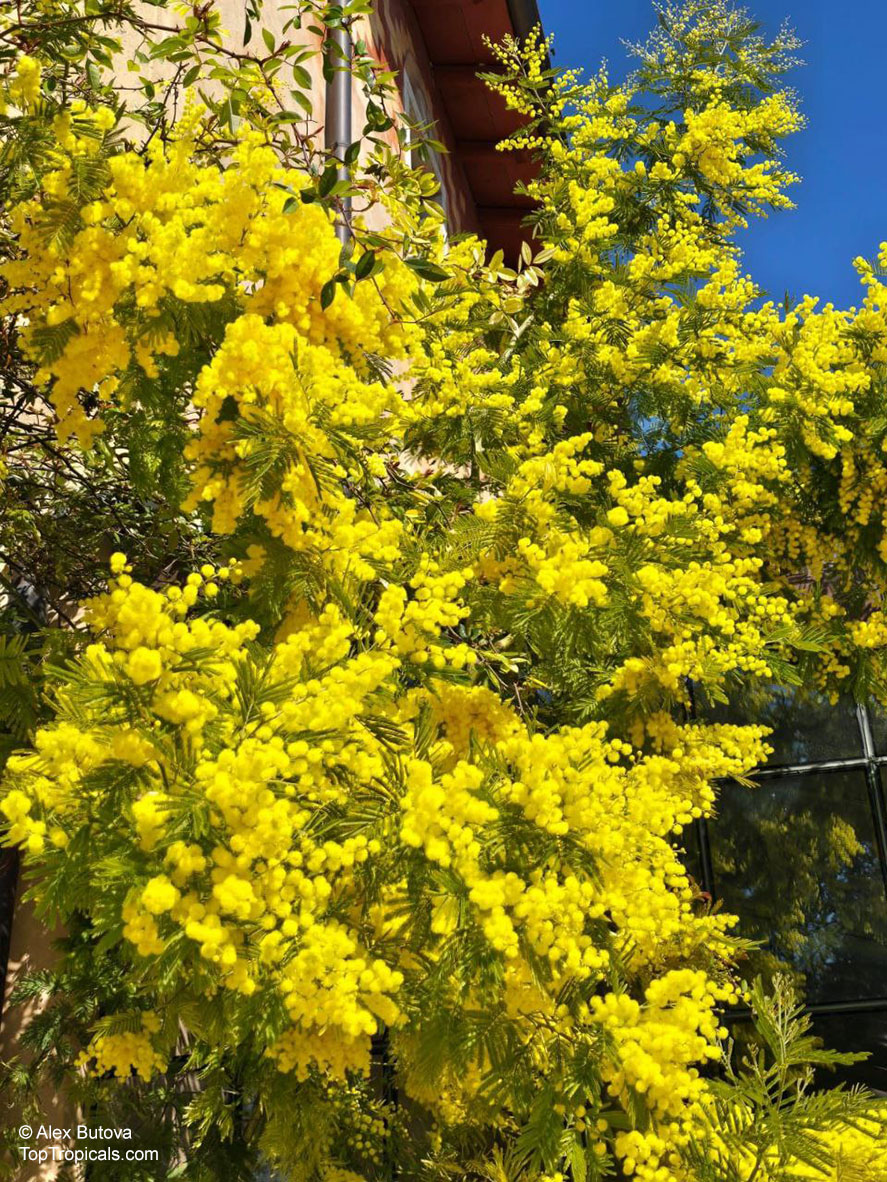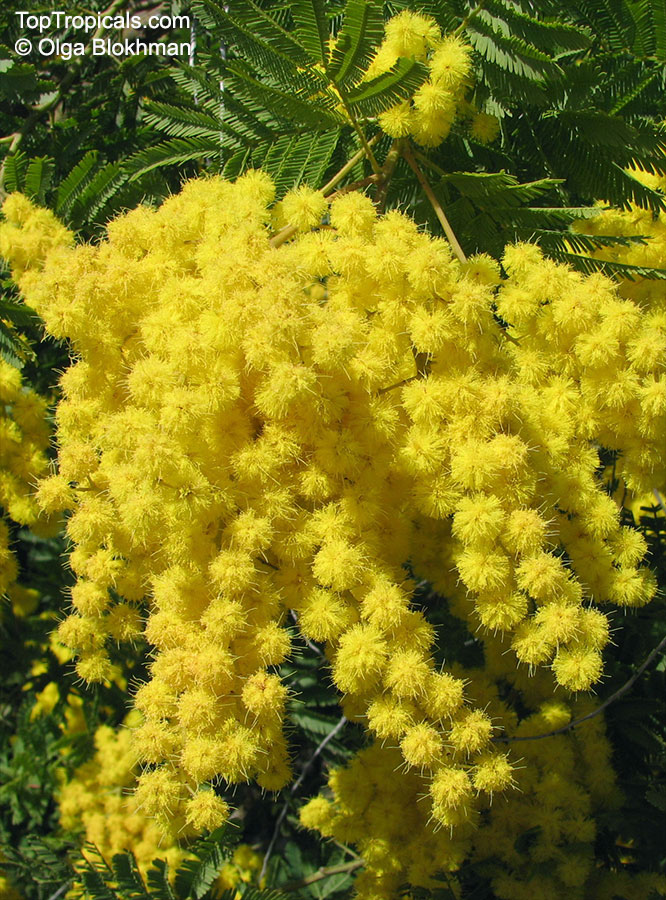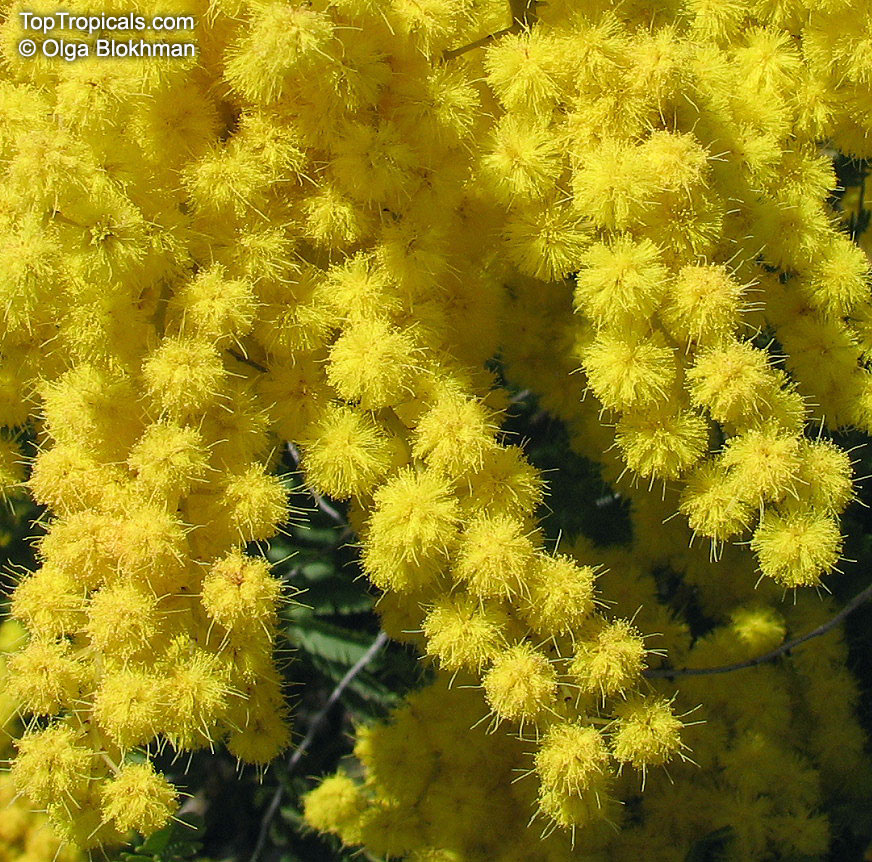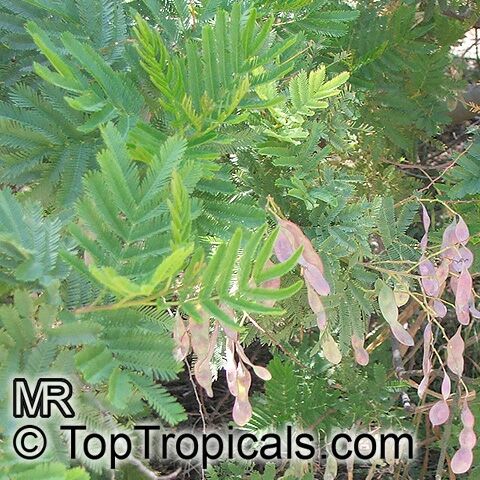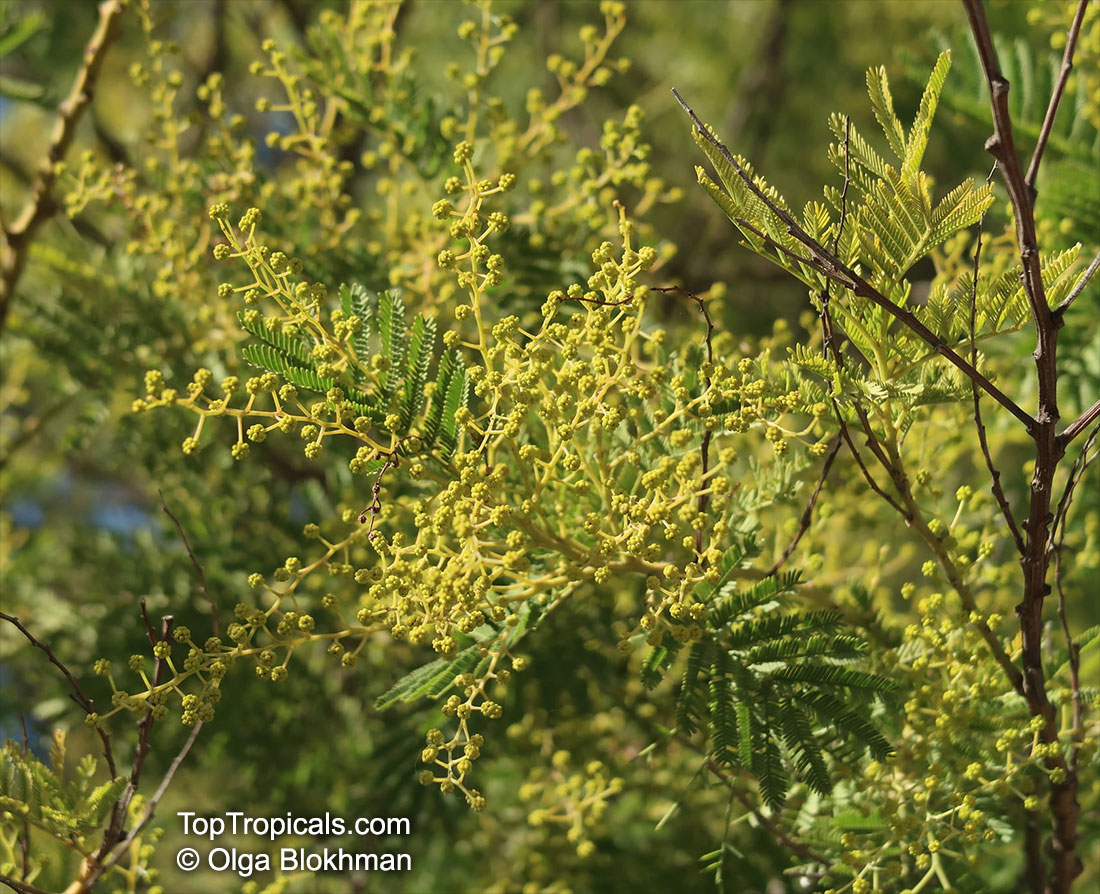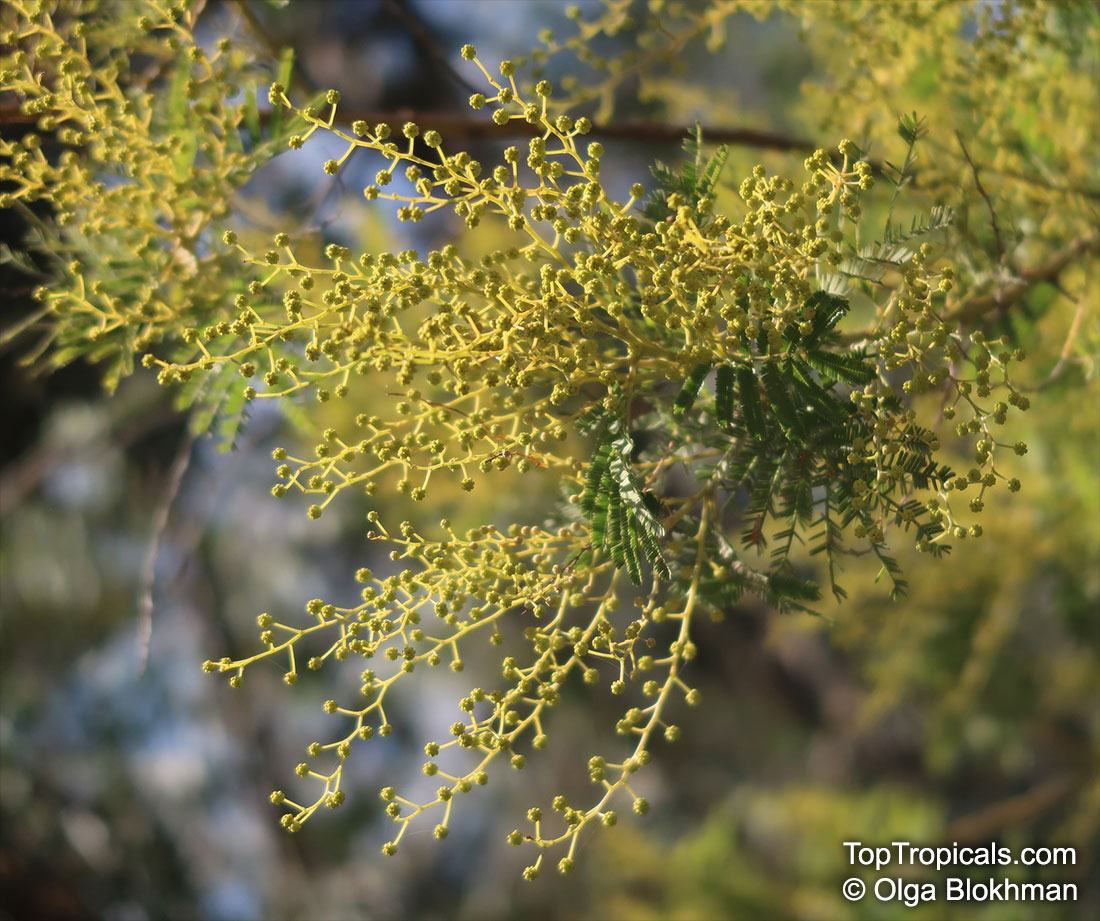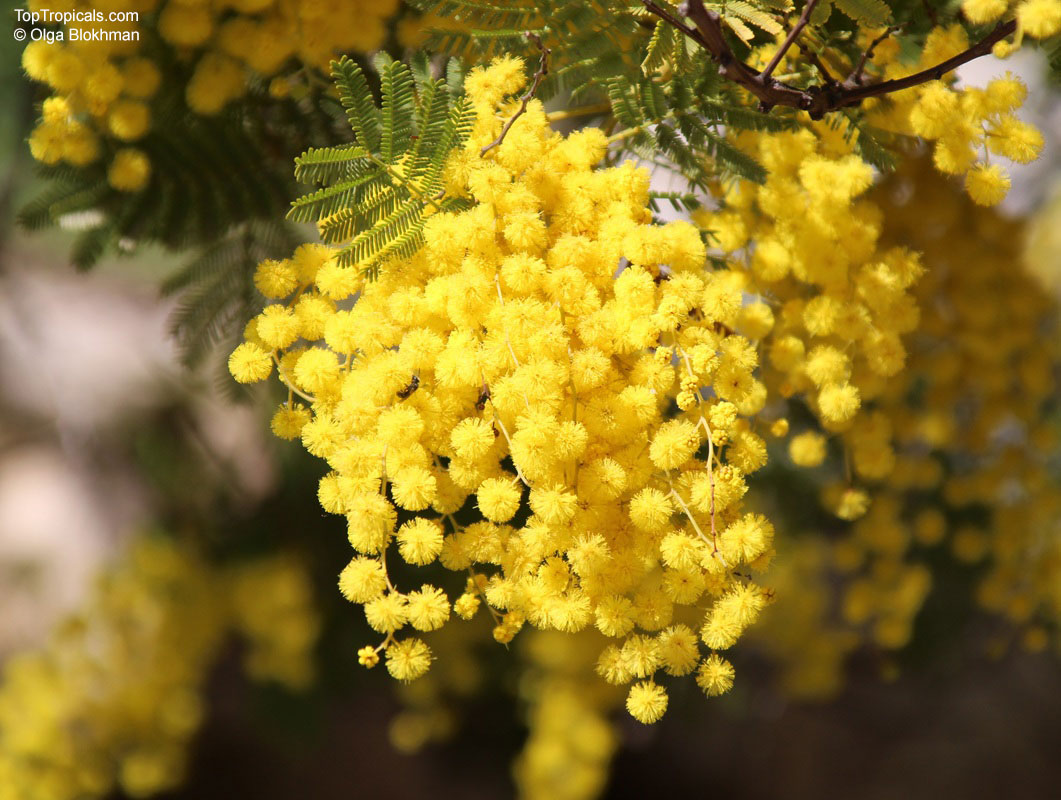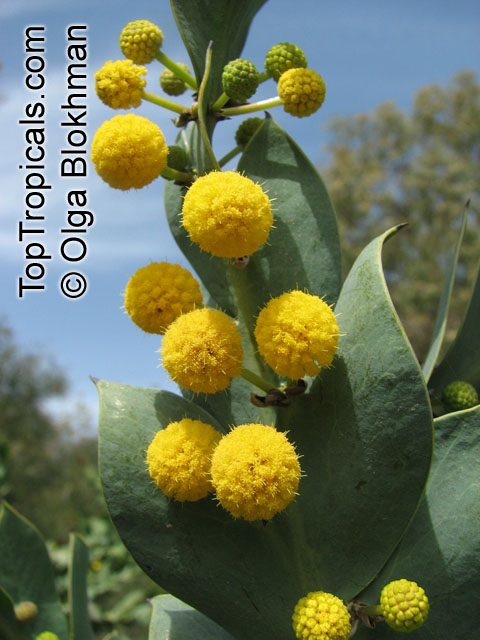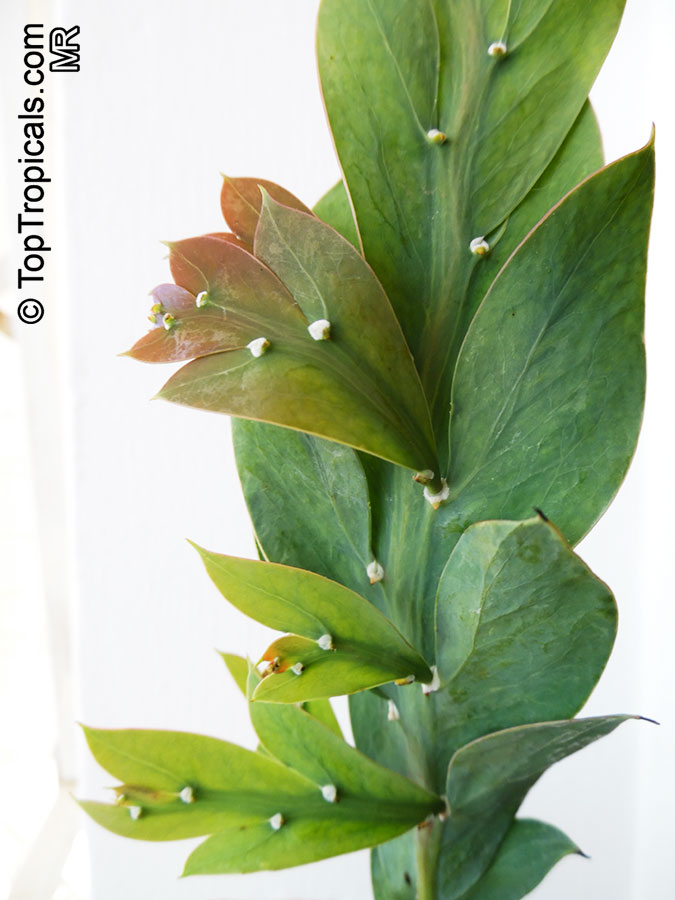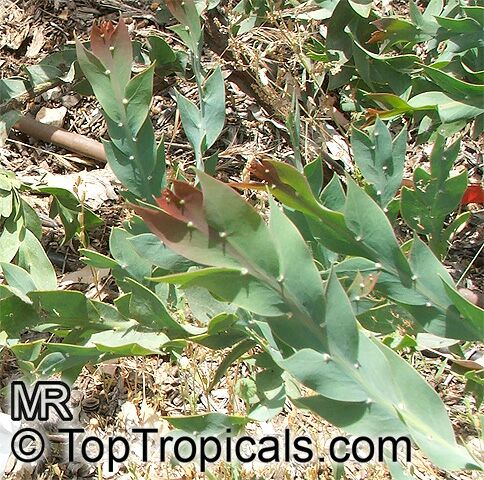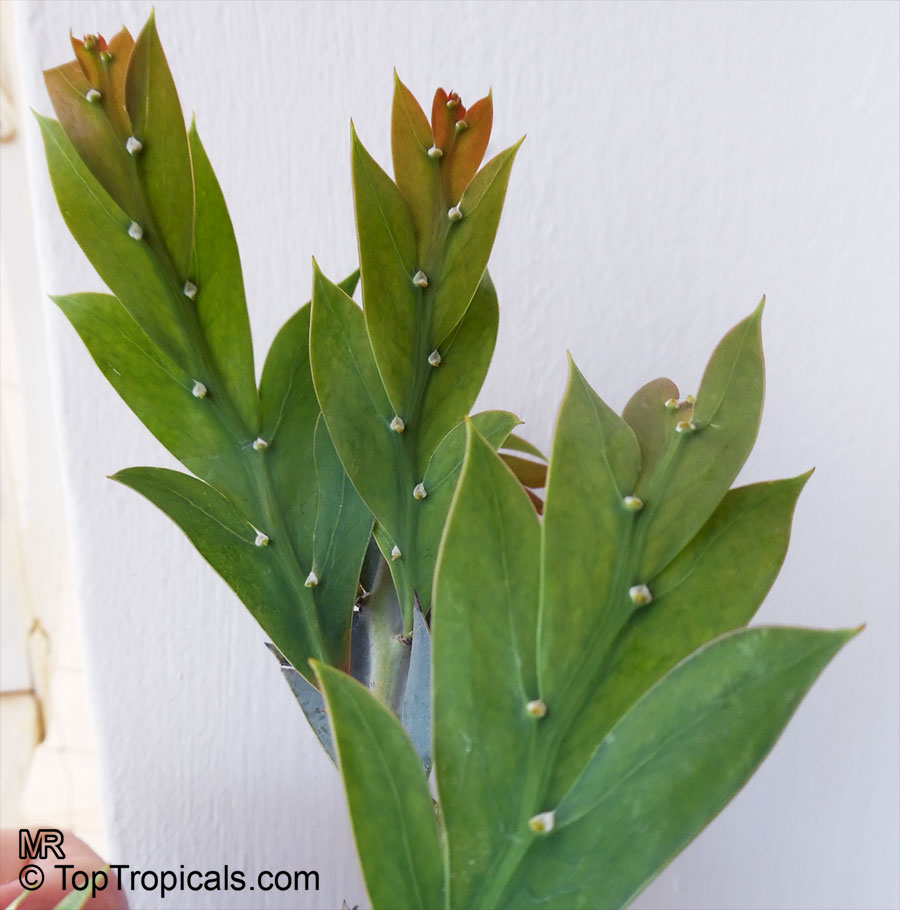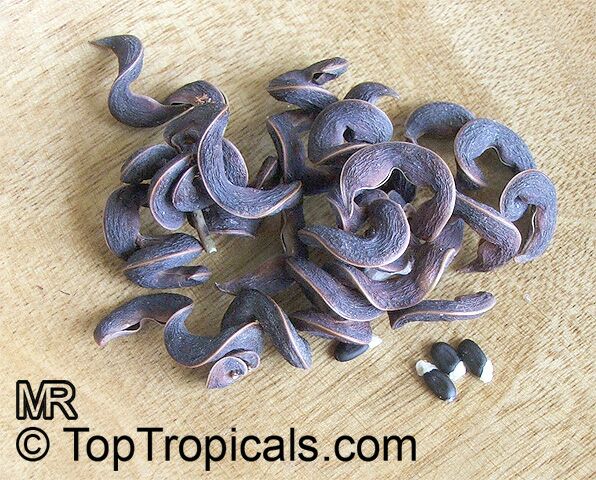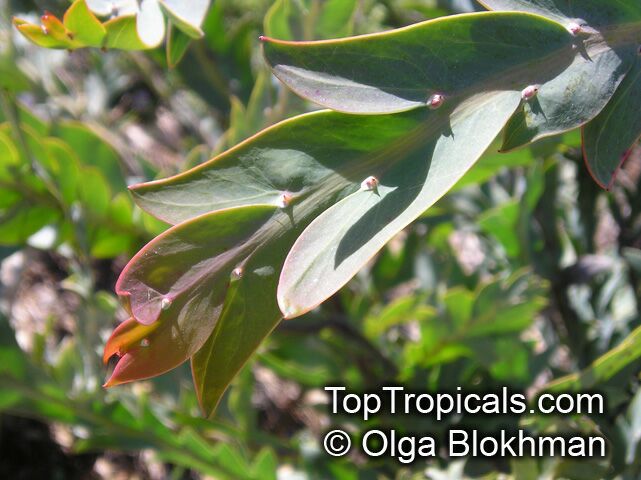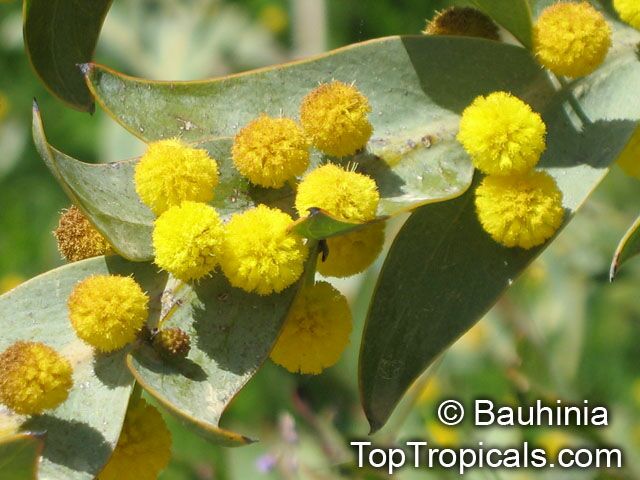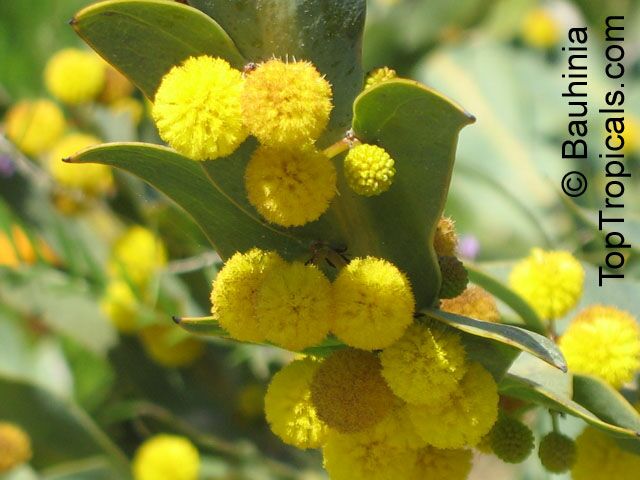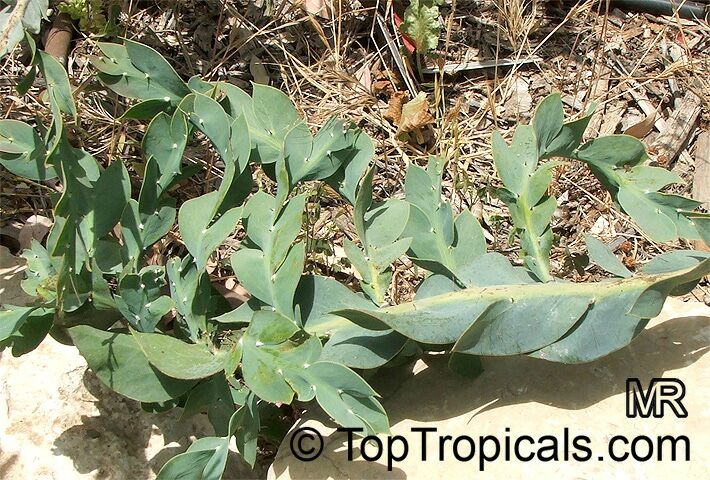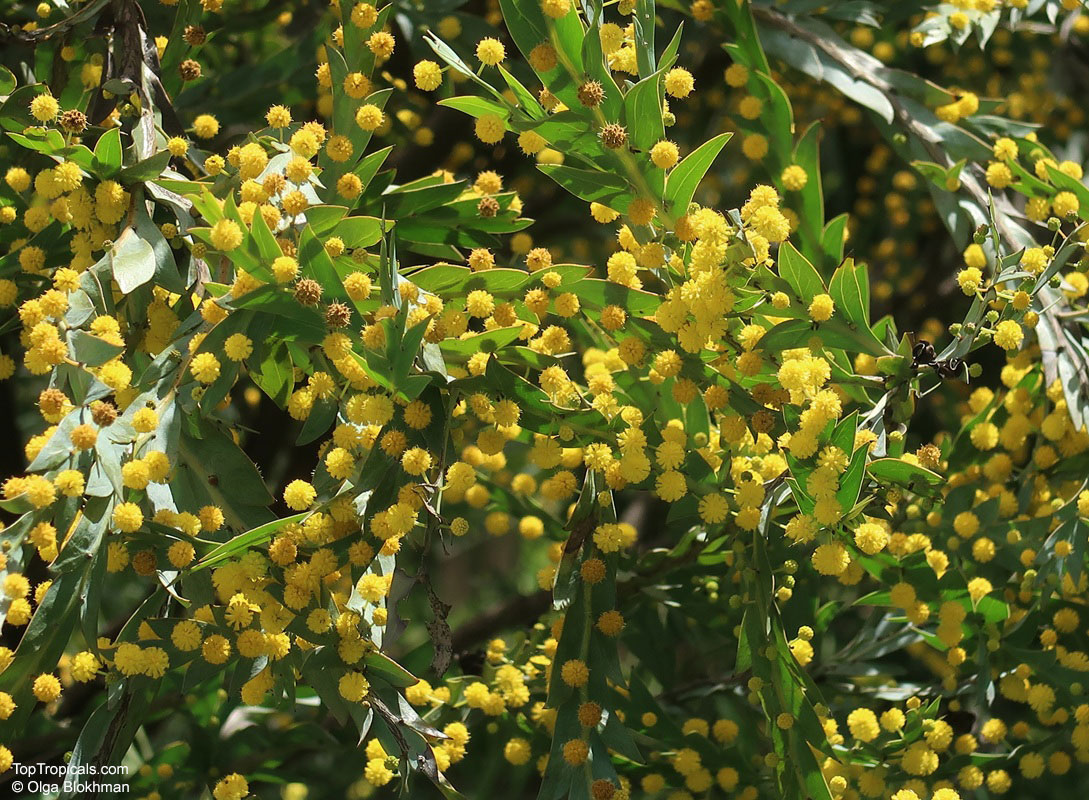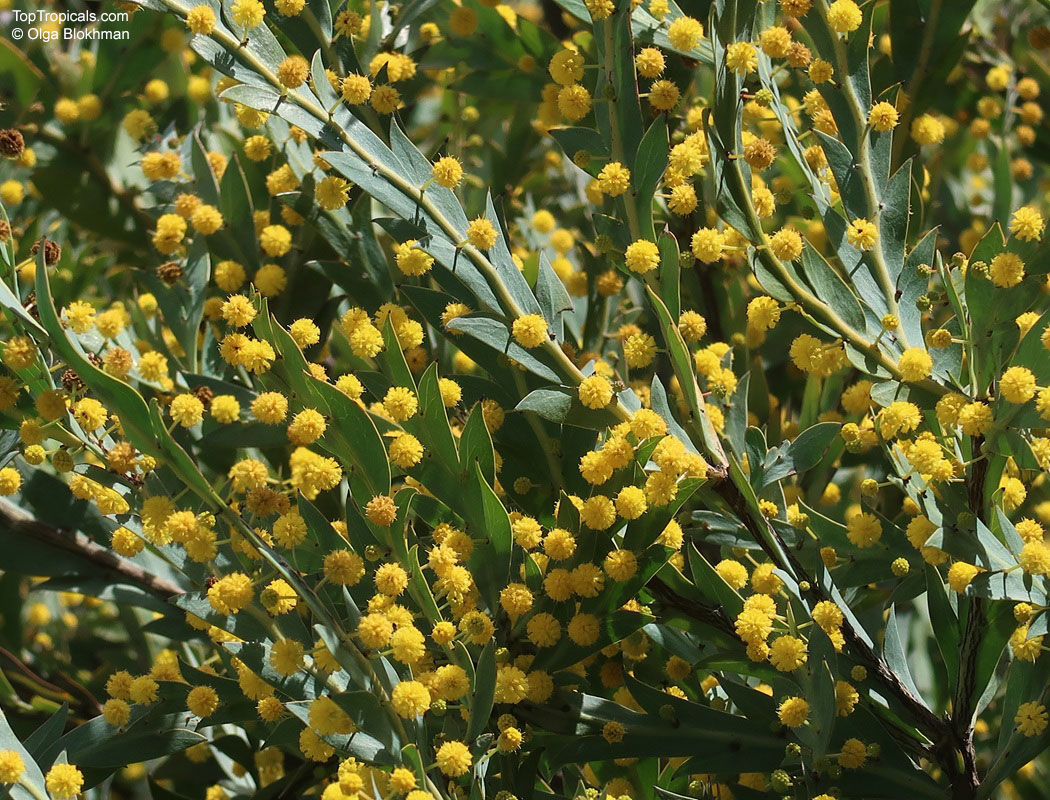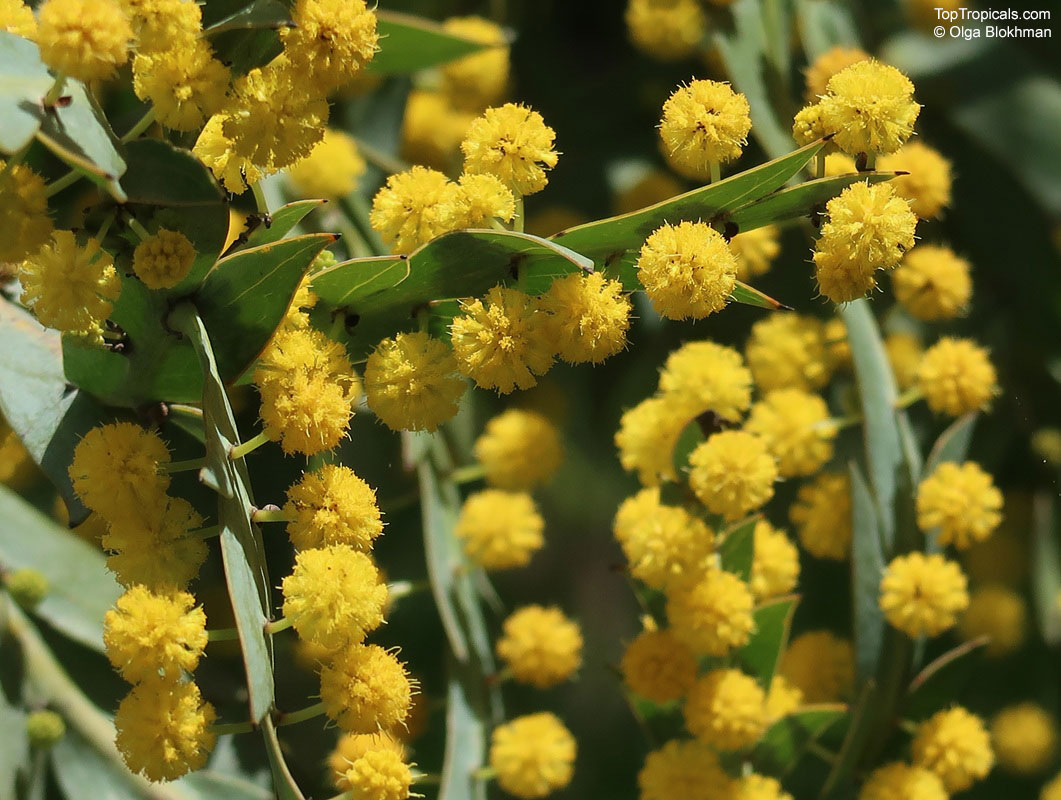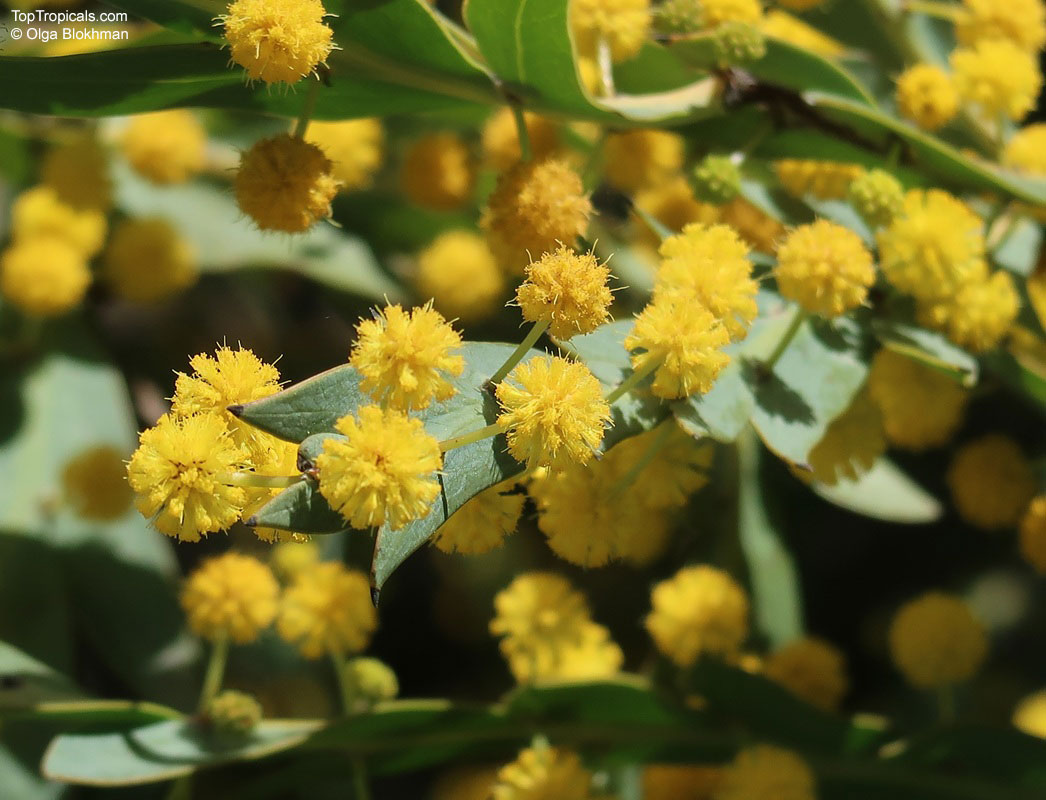Fabaceae - Botanical Family
Top Tropicals Plant Encyclopedia
| Number of plants found: 380 | Next | 
|
Go to page: | 1 | 2 | 3 | 4 | 5 | Last |
Botanical name: Abrus precatorius
Common names: Buddhist rosary bead, Rosary pea vine, Carolina muida, Deadly crab's eye, Lucky bean, Prayer beads, Weather plant, Wild liquorice
Family: Fabaceae
Subfamily: Faboideae
Origin: India, Sri Lanka, Thailand







Abrus precatorius has small pretty purple flowers located at the end of the stalks. Fruits are short, inflated pods, splitting open when mature to reveal the round; hard and shiny seeds which are scarlet, but black at the base. Seeds contain abrin, one of the most toxic plant poisons known.
Botanical name: Acacia adoxa
Common name: Acacia
Family: Fabaceae
Subfamily: Mimosoideae
Origin: Australia






Botanical name: Acacia auriculiformis
Common names: Darwin Black Wattle, Ear Pod Wattle
Family: Fabaceae
Subfamily: Mimosoideae
Origin: Australia, New Guinea






Very fast growing, undemanding ornamental and shade tree. Honey-sweet, showy yellow flowers attract bees and butterflies. The plant is amazing in its ability to recolonize waste. Hard to kill. Can grow as much as 6-8 ft per season. Mature trees are medium sized. If you are looking for a fast result, this shade tree is for you. The plant is amazing in its ability to recolonize waste, paper mill sludge; even uranium spoils. This is the only tree found on a 20-year old uranium spoil. Cold hardy to some freeze.
Botanical name: Acacia baileyana
Common name: Purple Fernleaf Acacia
Cultivar: Purpurea
Family: Fabaceae
Subfamily: Mimosoideae







Acacia baileyana 'Purpurea' (Purple Fernleaf Acacia) is a small, drought tolerant tree that can reach 10-20 feet in height in the right conditions. It thrives in full sun, and requires moderate water, which decreases once established. It has ornamental foliage, and produces beautiful yellow, orange flowers. These fragrant blooms attract butterflies and hummingbirds to your garden. It grows best in USDA hardiness zones 9-11.
When planting Acacia baileyana 'Purpurea', dig a hole that is twice as wide as the root ball and around the same depth. This will ensure the roots have plenty of space to spread out. Once planted, water deeply to help the roots establish.
For cold regions, it is best to plant Acacia baileyana 'Purpurea' in a pot and move it indoors in cold winter months. Make sure the pot is well drained and replant every few years for optimal growth. Feeding with a fertilizer in the spring and summer will help promote growth. If you see any signs of disease or pests, treat them as early as possible with an appropriate product.
Botanical names: Acacia cavenia, Mimosa caven
Common names: Espino Cavan, Roman Cassie
Family: Fabaceae
Subfamily: Mimosoideae
Origin: Chile and Argentina





Botanical name: Acacia cultriformis
Common names: Knife-leaf Wattle, Dogtooth Wattle, Half-moon Wattle, Golden-glow Wattle
Family: Fabaceae
Subfamily: Mimosoideae
Origin: Australia
Hardiness: 25°F







Acacia cultriformis is a woody shrub with an upright or spreading habit that grows to 4 m (13 ft) in height.
Its bright flowers and attractive leaves make Acacia cultriformis one of the most popular wattles in cultivation. Drought tolerant, it can be used to combat soil erosion.
The flowers are edible and they are an ingredient used in some fritters. Yellow dye is extracted from the flowers and green dye is extracted from the seed pods
Botanical name: Acacia dealbata
Common names: Silver Wattle, Winter Mimosa tree
Family: Fabaceae
Subfamily: Mimosoideae
Origin: Australia






Acacia dealbata (Silver Wattle) is usually found growing in full sun and can tolerate a range of soils as long as it is well drained. It appreciates moderate water and should be kept evenly moist; it is also moderately drought tolerant once established. This small tree is native to Australia and grows to a height of 10-20 feet, with a spread of 8-15 feet. This tree is invaluable in the landscape due to the profusion of fragrant, yellow or orange flowers that are produced in early spring. Not only do they add much beauty and fragrance to the garden, but they attract both butterflies and hummingbirds.
It thrives in USDA zones 9-11. When planting Acacia dealbata, choose a spot where it can be in full sun and keep the soil evenly moist. In cold regions, the Silver Wattle does best in a container rather than planted directly in the ground. Be sure the container is large enough for the tree to reach its full height, with plenty of drainage. During the colder months, mulch heavily around the container to protect the roots. Water when the soil is dry to a depth of an inch or so, and avoid over-watering as this can lead to root rot. Fertilizer should be applied occasionally during the growing season.
Overall, Acacia dealbata is a unique and beautiful addition to the garden, with its fragrant blooms and stunning foliage.
Botanical name: Acacia decurrens
Common name: Black Wattle
Family: Fabaceae
Subfamily: Mimosoideae
Origin: Australia






Acacia decurrens is a tall shrub or small tree with bipinnate foliage. The ridge that runs along each branch may be used to identify Acacia decurrens. The dark green foliage contrasts with the bright yellow spring flowers.
Acacia decurrens bark was used in the tanning industry. Tolerates full sun and will grow in most soil conditions.
Botanical name: Acacia glaucoptera
Common names: Clay Wattle, Queen Wattle
Family: Fabaceae
Subfamily: Mimosoideae
Origin: Western Australia
Hardiness: 25 F








A native to Western Australia, Acacia glaucoptera (Clay Wattle) is a small plant, natively growing up to 2-5ft tall. It is an ornamental shrub, featuring an eye-catching foliage that is light to medium green, with a glaucaous-white and a distinctive broad-winged phyllodes. The yellow to orange-colored and globular-shaped flowers are the biggest highlight of this plant, appearing from central stems in spring.
Acacia glaucoptera can be grown in full sun, semi-shade, and higher temperate regions. It can be grown in USDA Zone 9-11. It is a highly drought-tolerant shrub that does well in dry conditions. It also does well in a container and attracts numerous butterflies and hummingbirds. Moderate watering is recommended for the shrub, with regular pruning, which will help promote a compact and bushy growth.
In colder regions, Acacia glaucoptera is an ideal plant for growing in a pot as they need protection from extreme cold and frost conditions. When growing in a pot, find a suitable location where the plant will get enough sunlight and water. Pay attention to the pot size; a large pot is necessary for growth. Water the plant when required, keeping the soil moist. In winter, water the plant less frequently but never let the soil dry out completely. Apply a balanced fertilizer every month to provide the necessary nutrients.
Botanical name: Acacia iteaphylla
Common name: Willow-leaf Wattle
Family: Fabaceae
Subfamily: Mimosoideae
Origin: Australia







Acacia iteaphylla grows best in a well drained sunny position. It is moderately frost tolerant and moderately salt tolerant.
| Next |  |
Use link to repeat this search:
https://toptropicals.com/cgi-bin/garden_catalog/cat.cgi?search_op=and&keyword_op=and&language=e&family=Fabaceae&number=10
&no_change_lang=1&user=tt&sale=1&first=0
